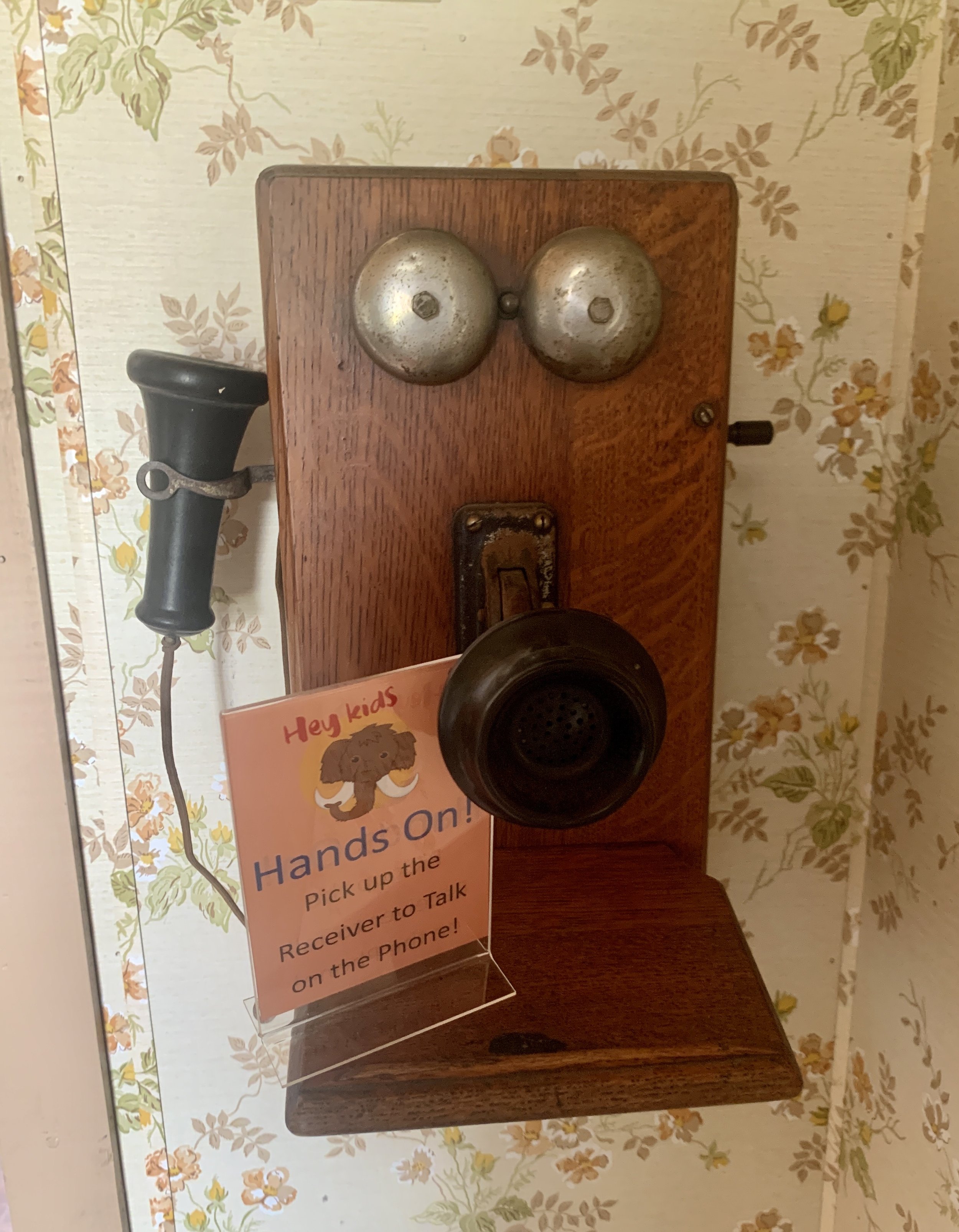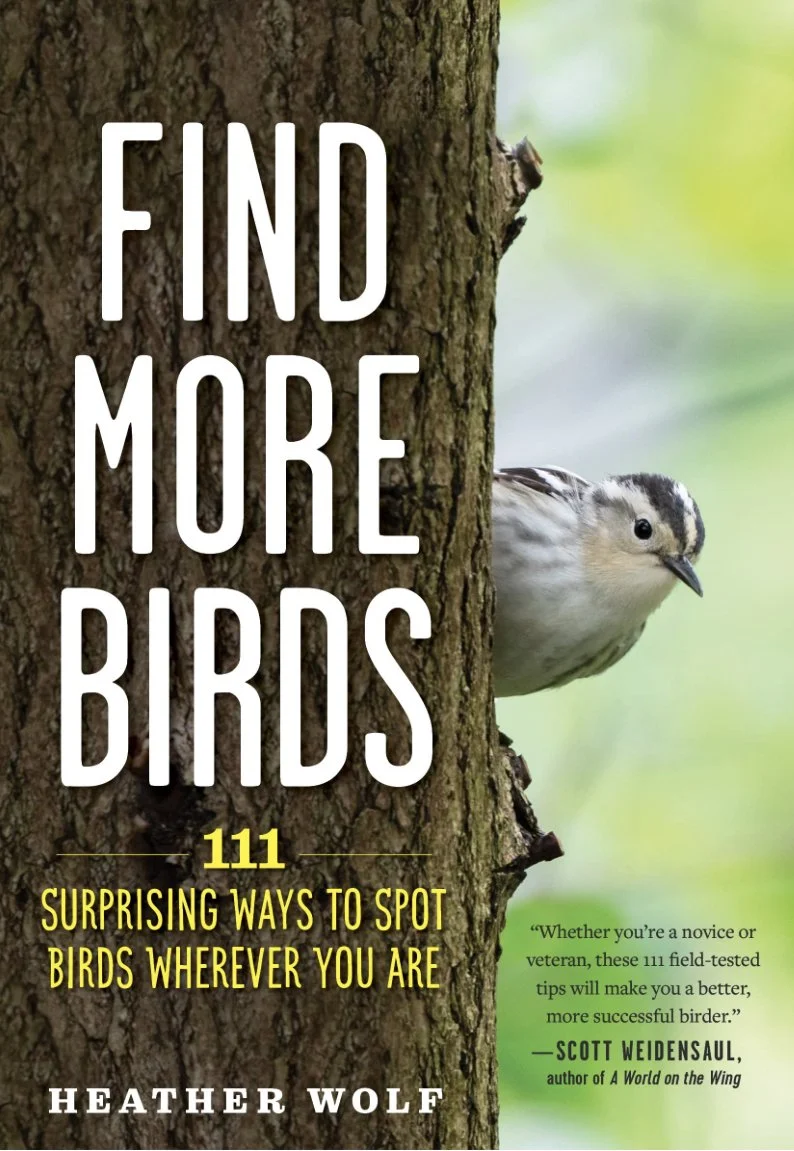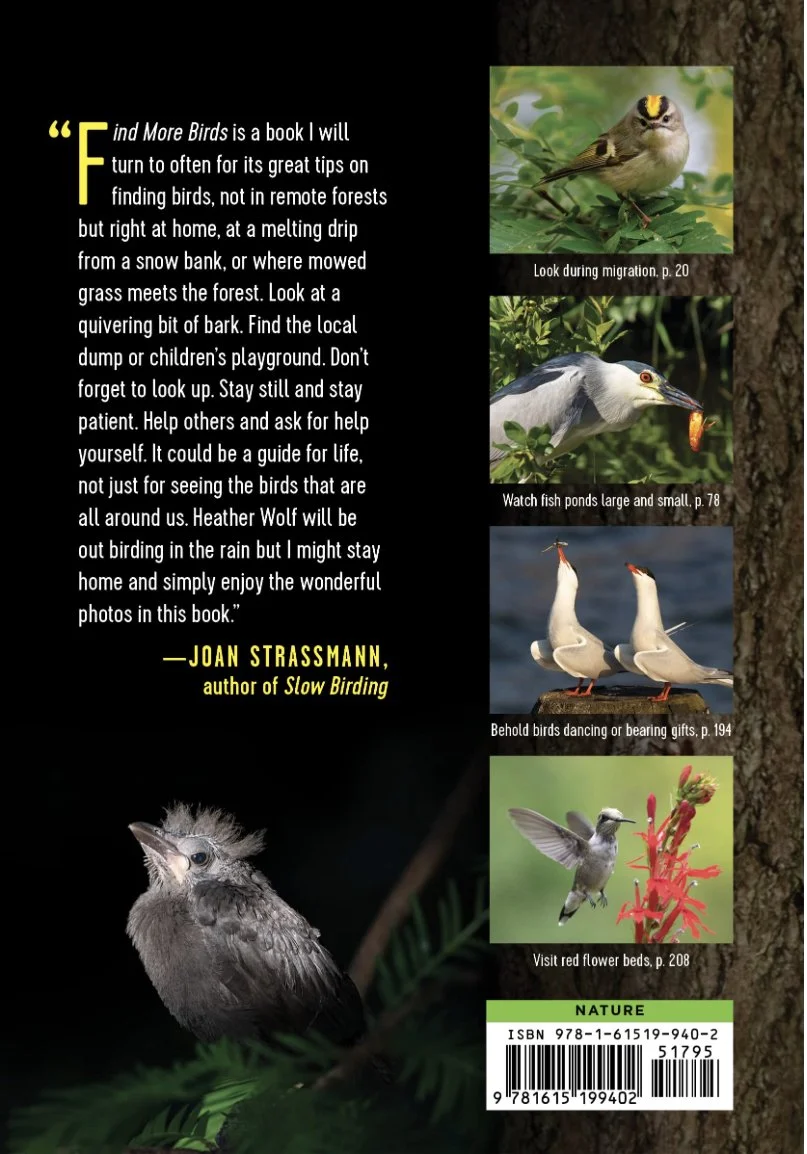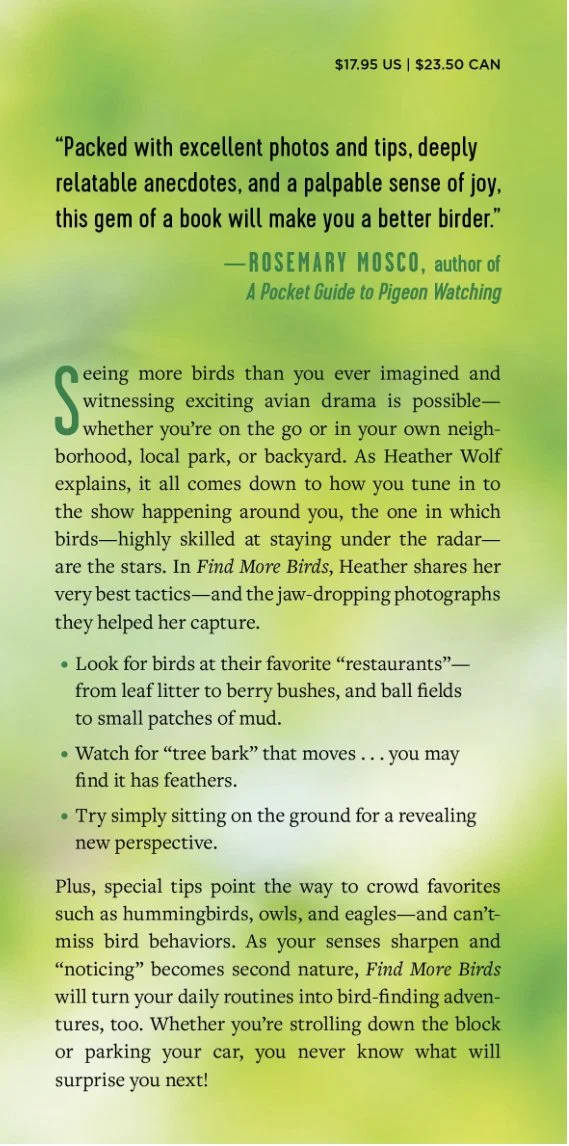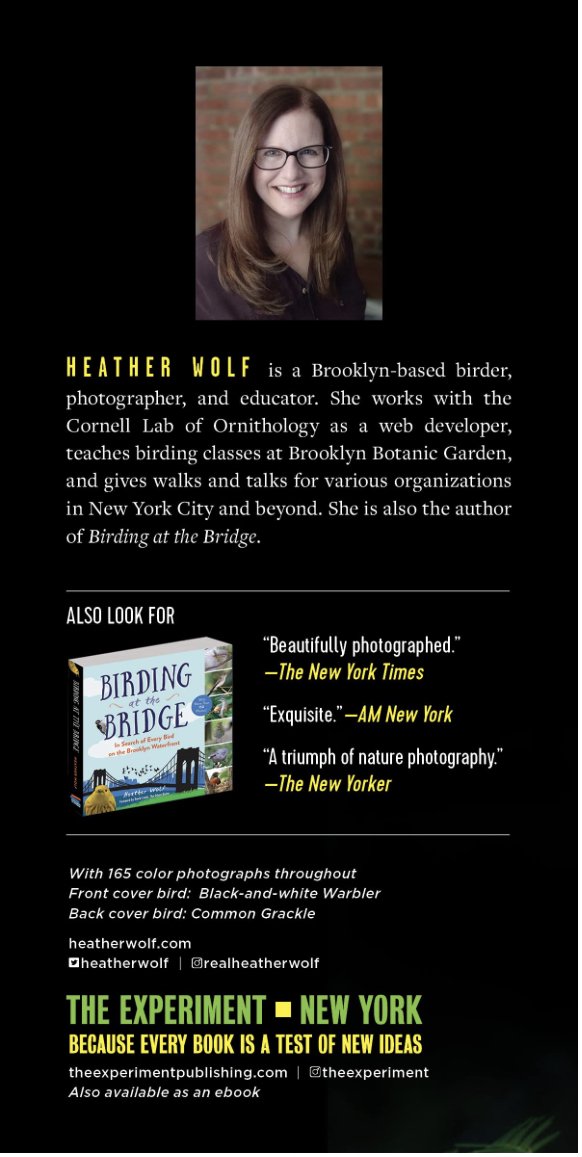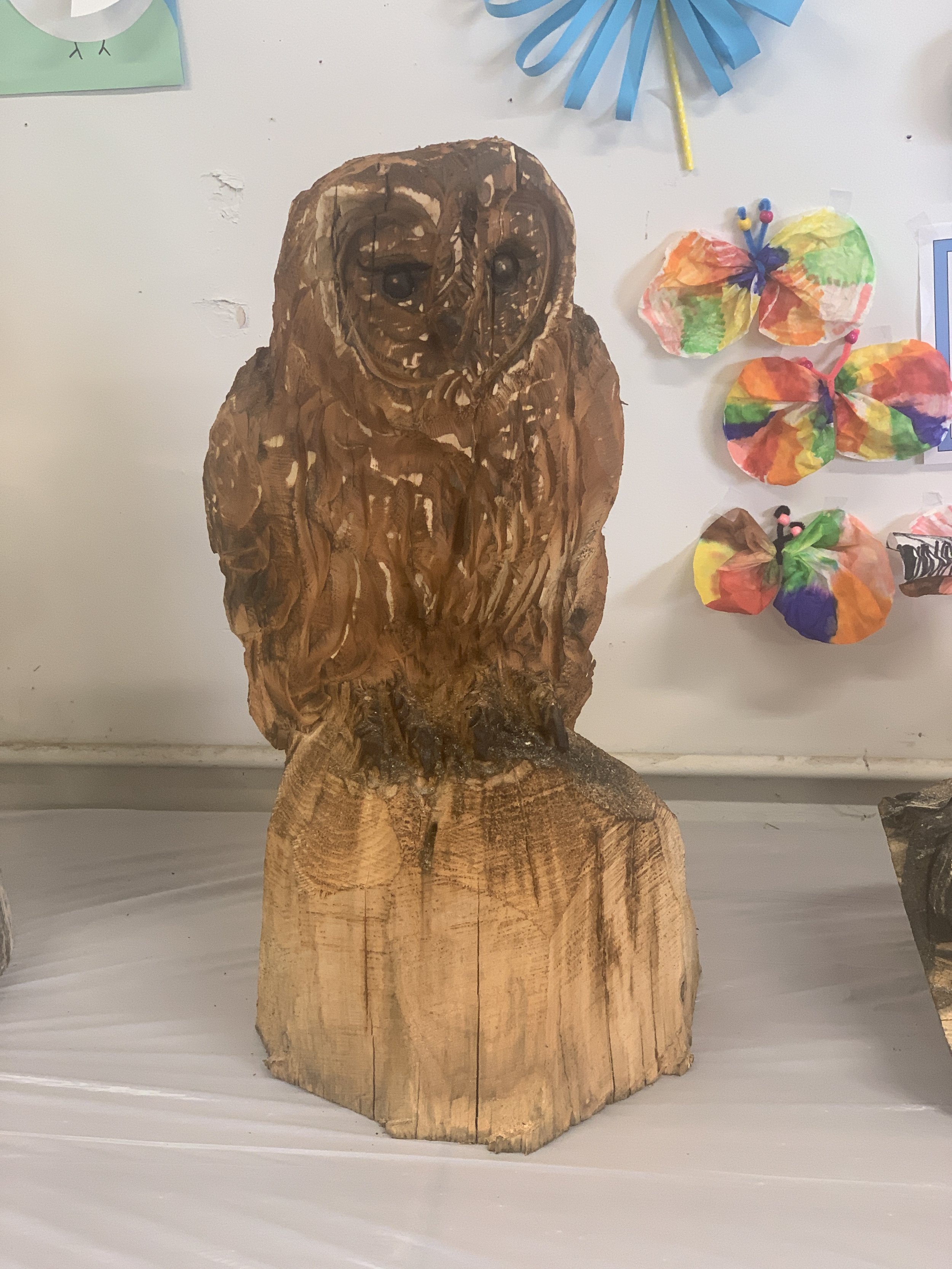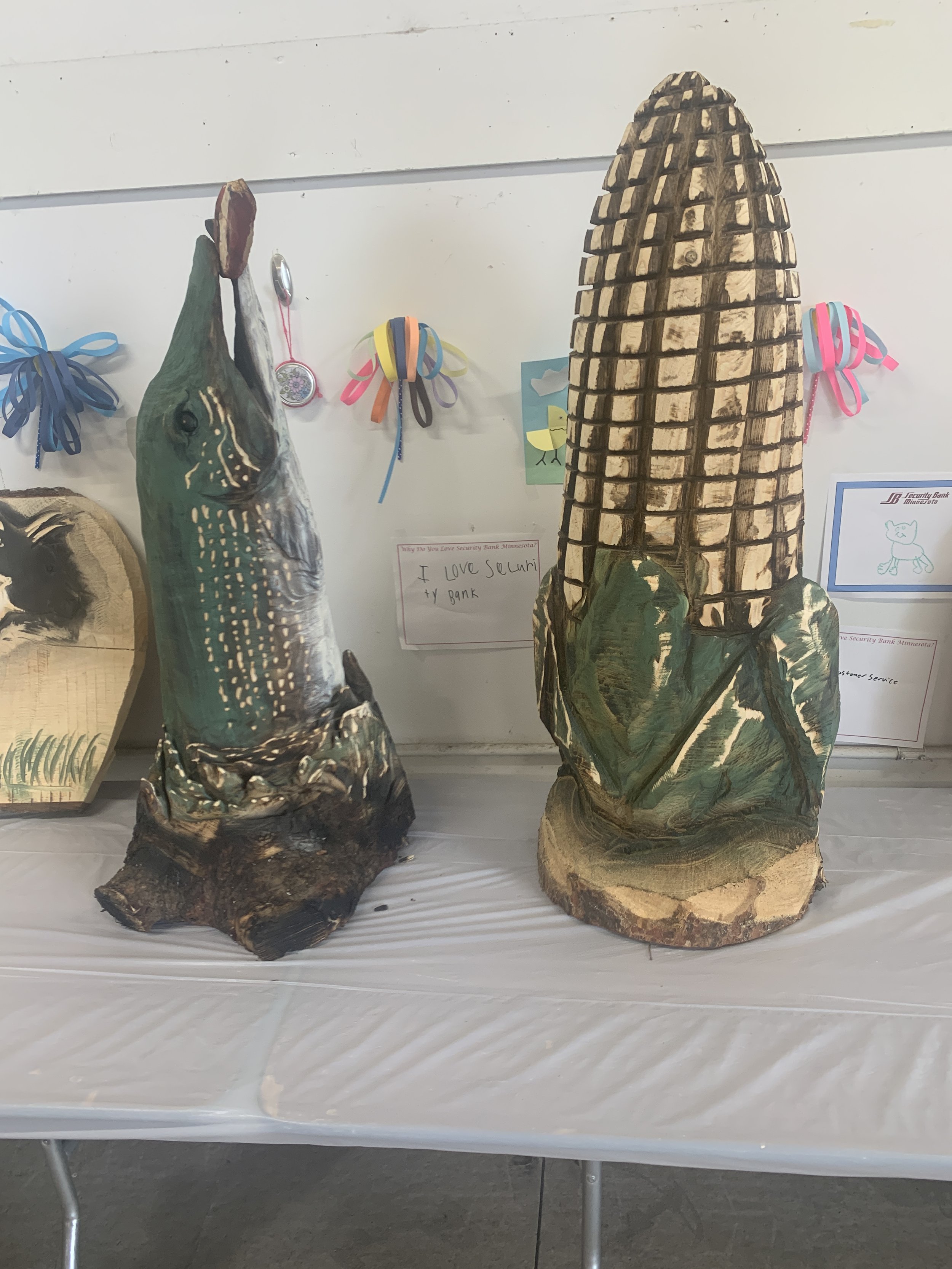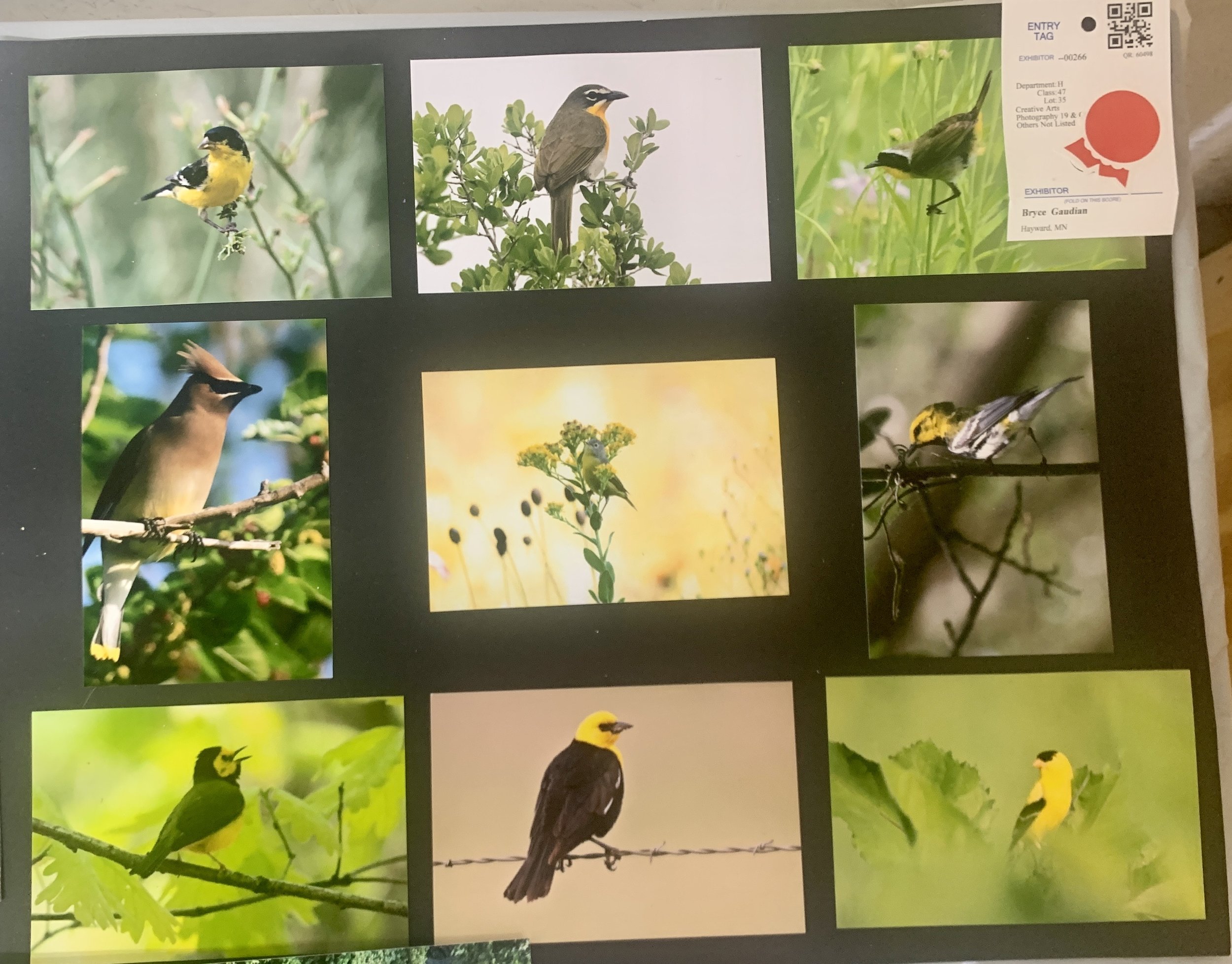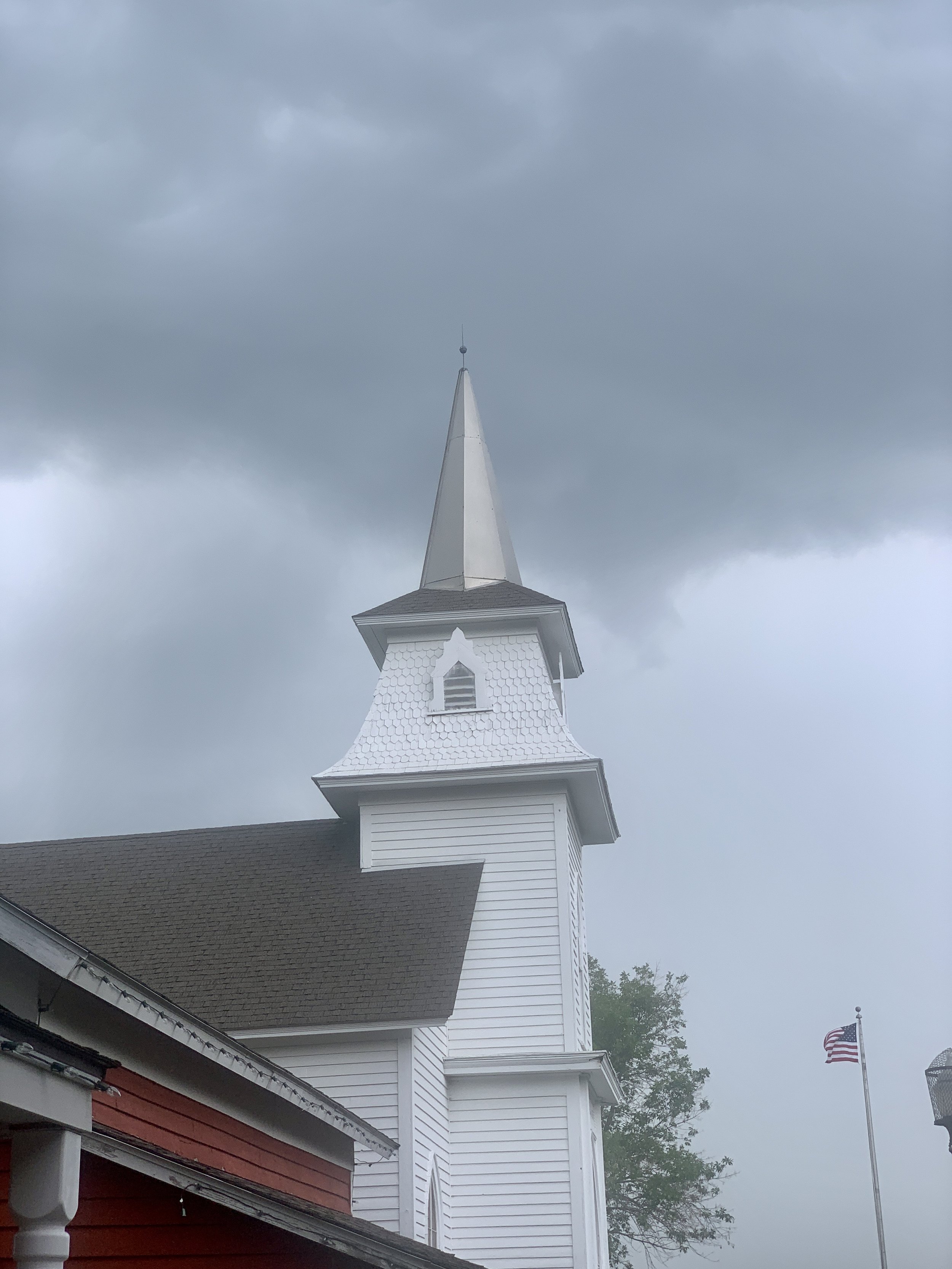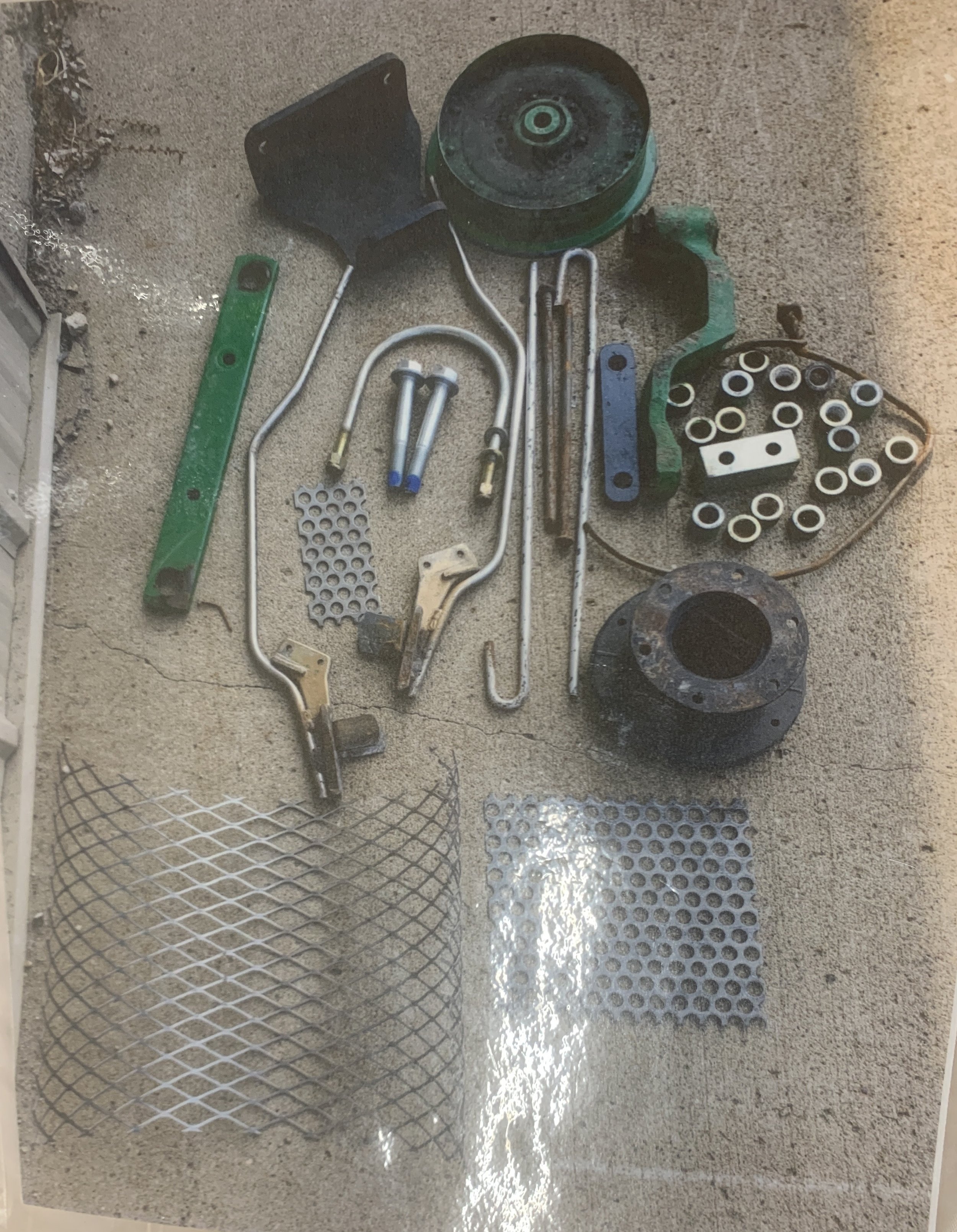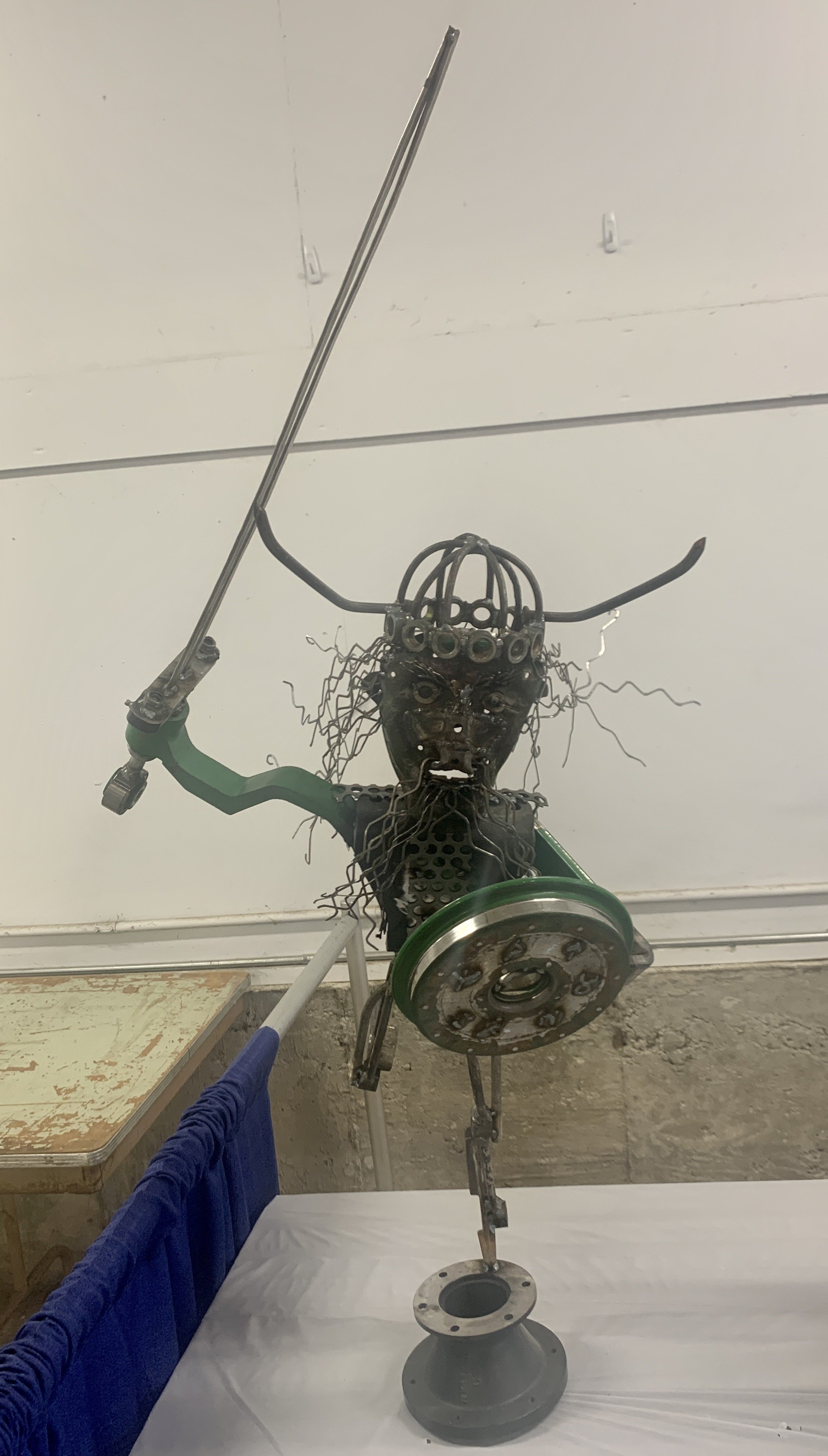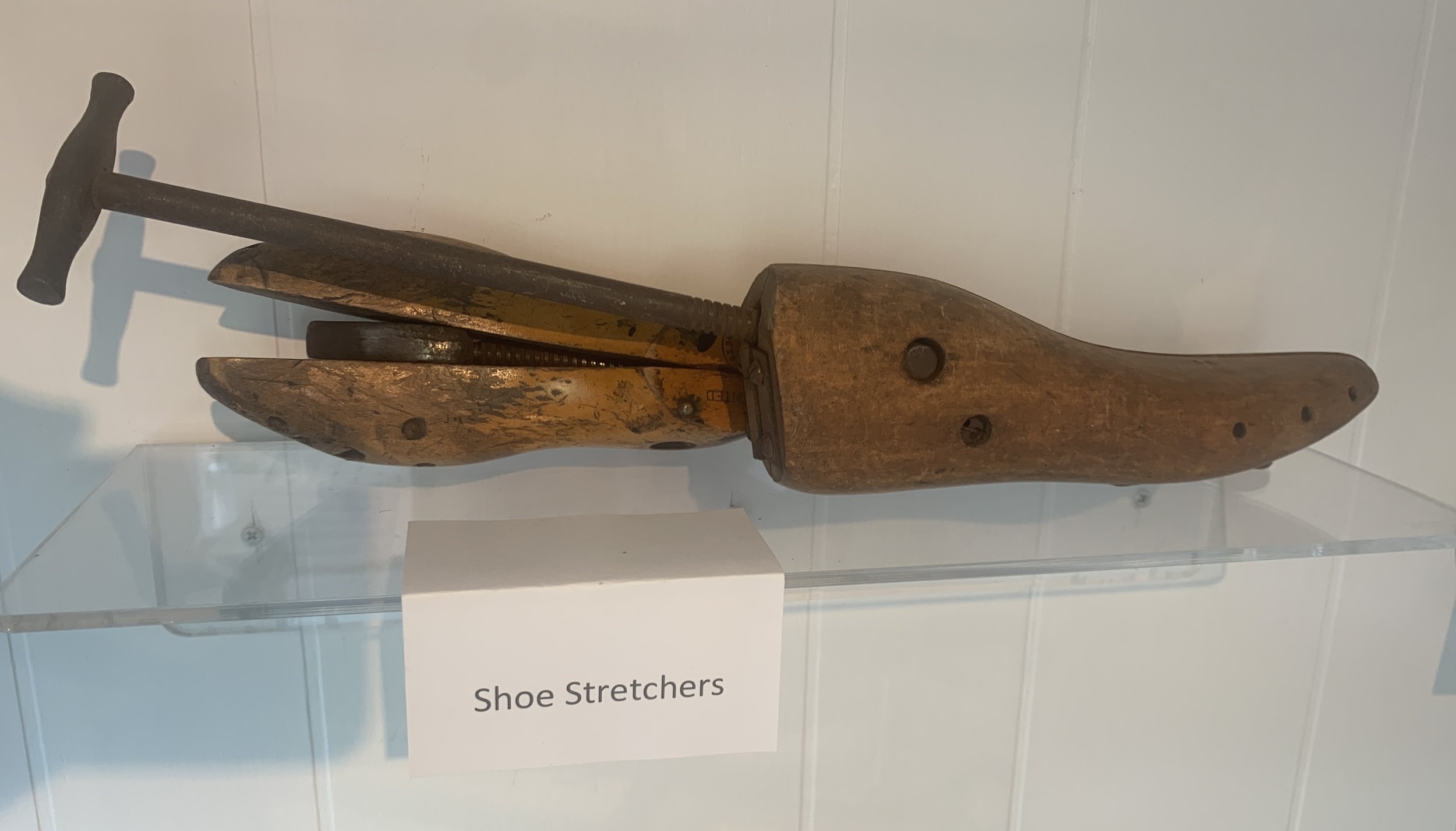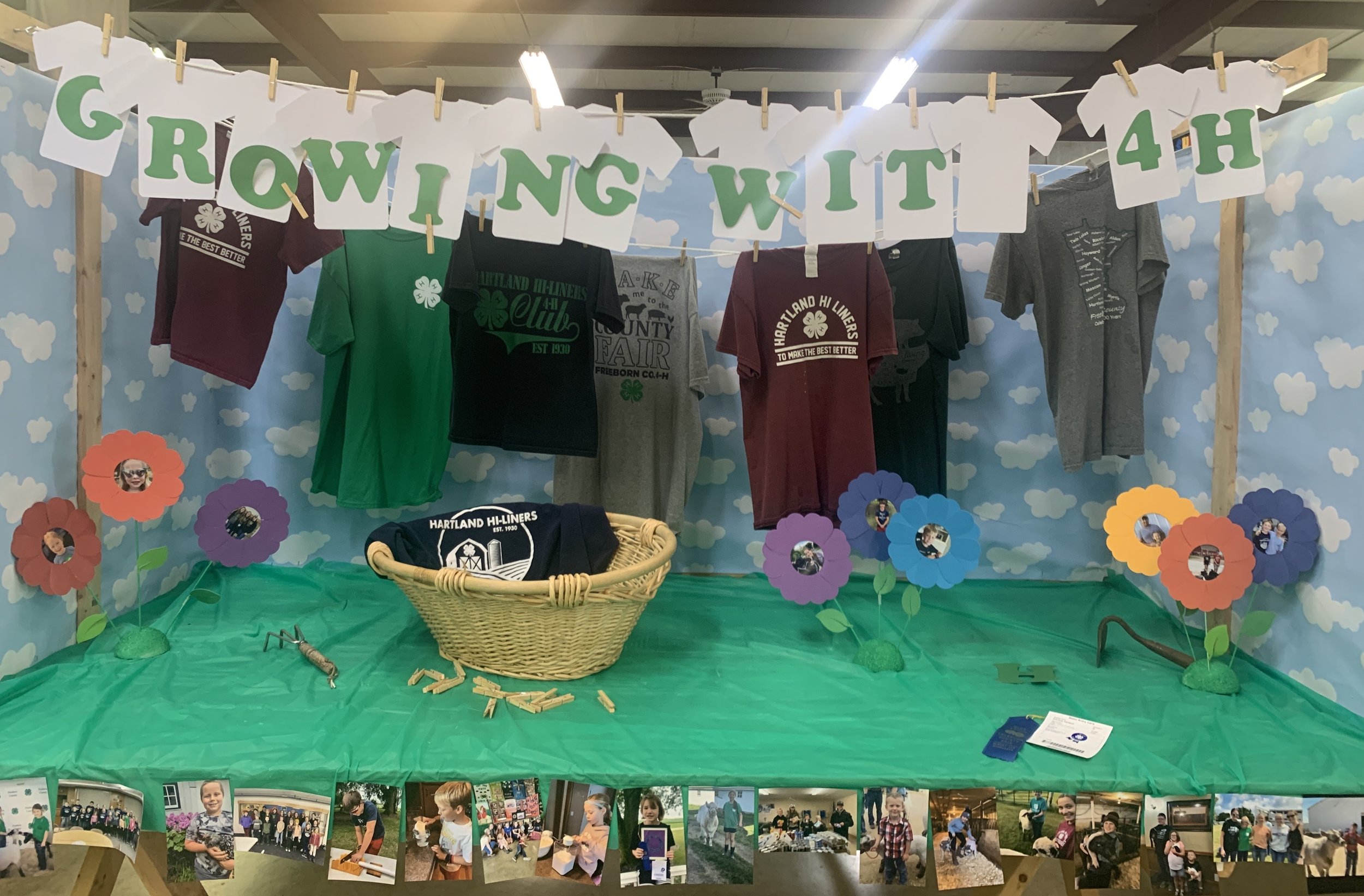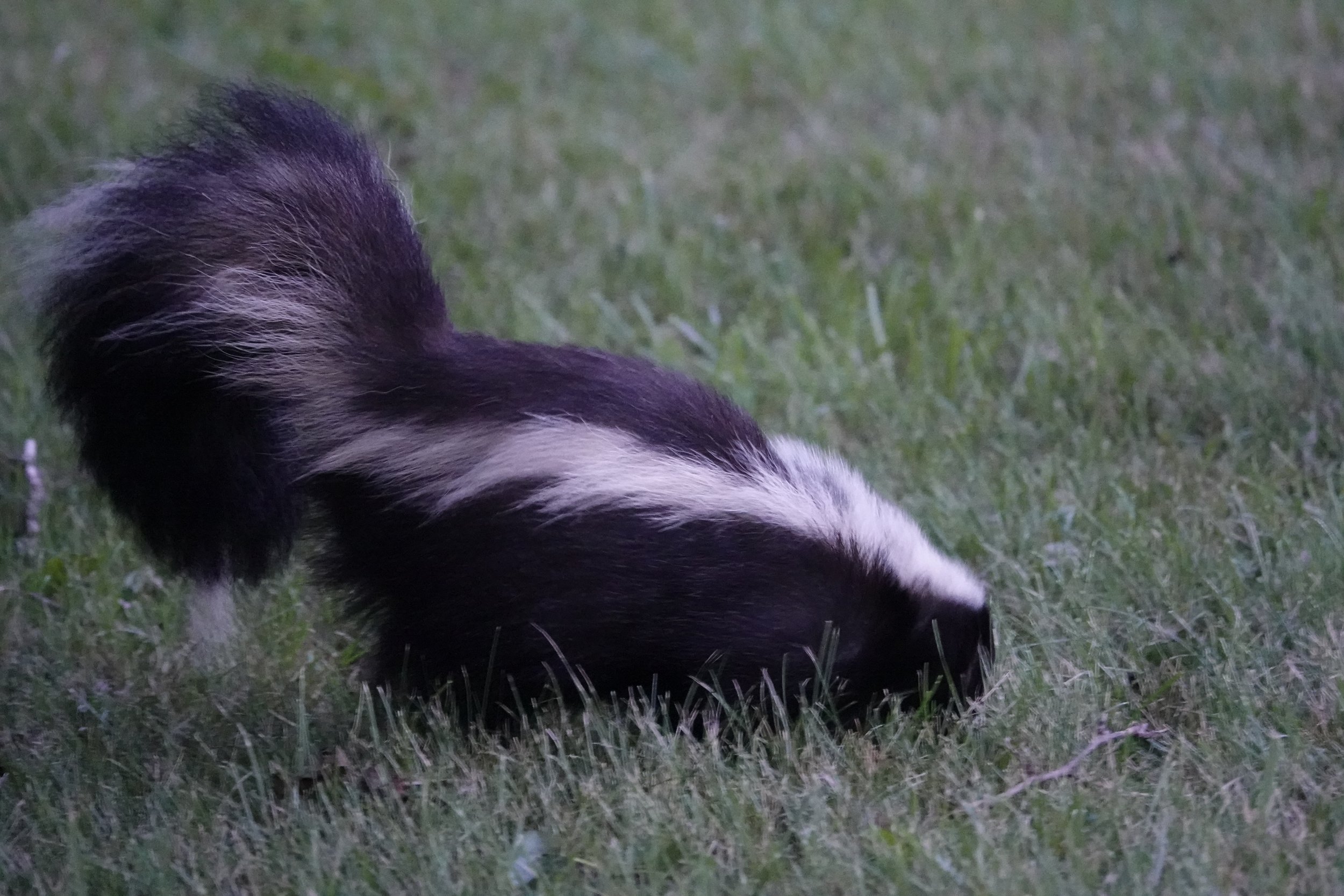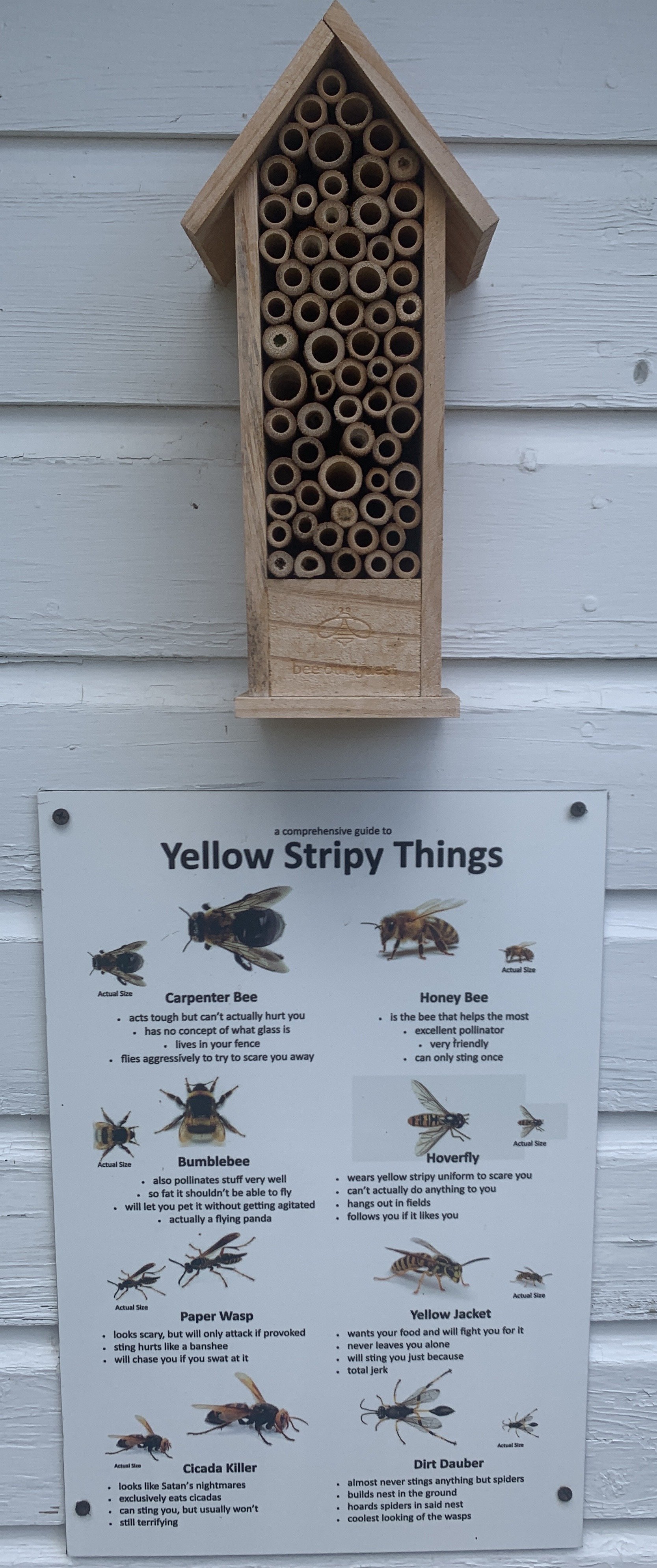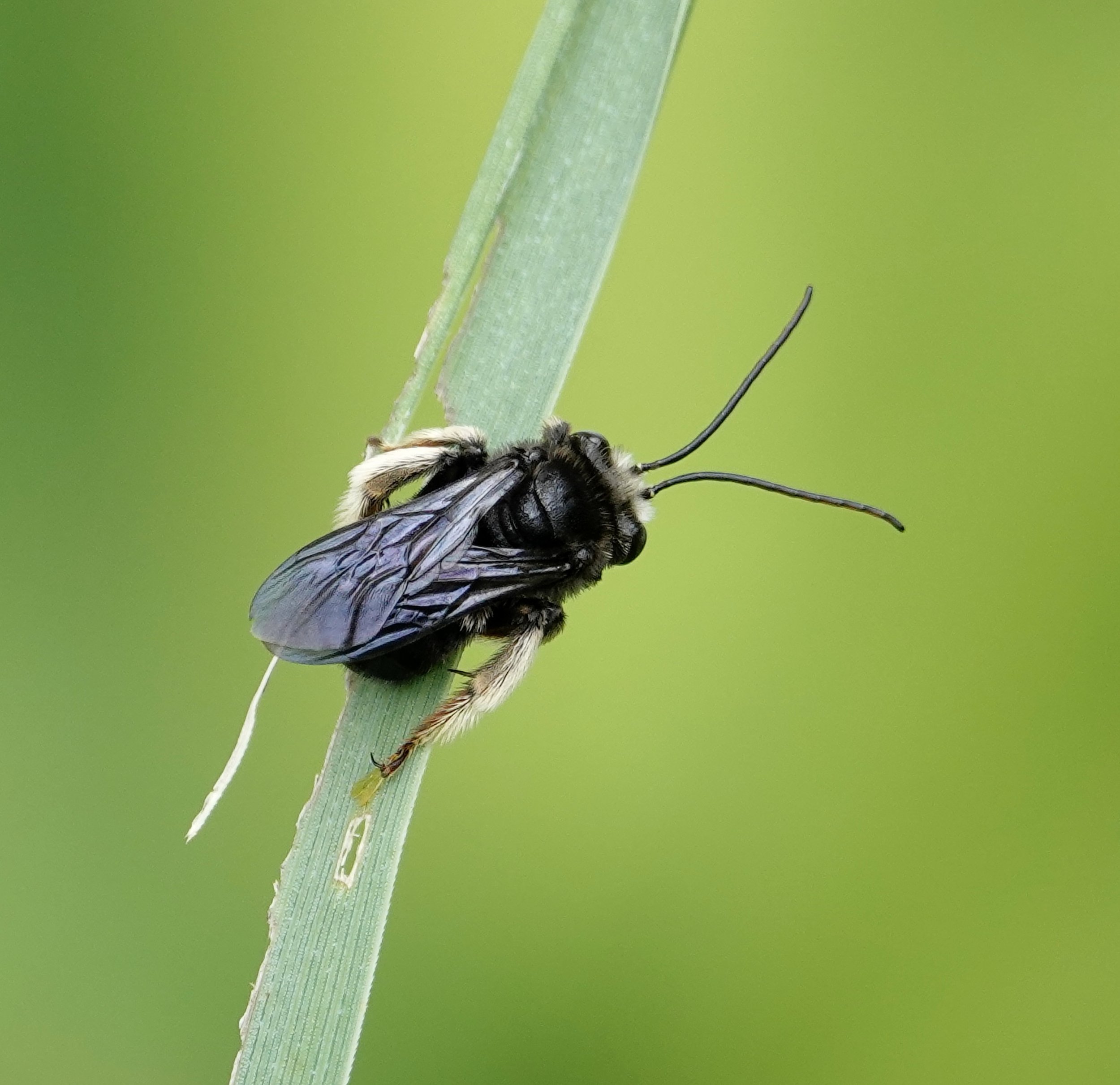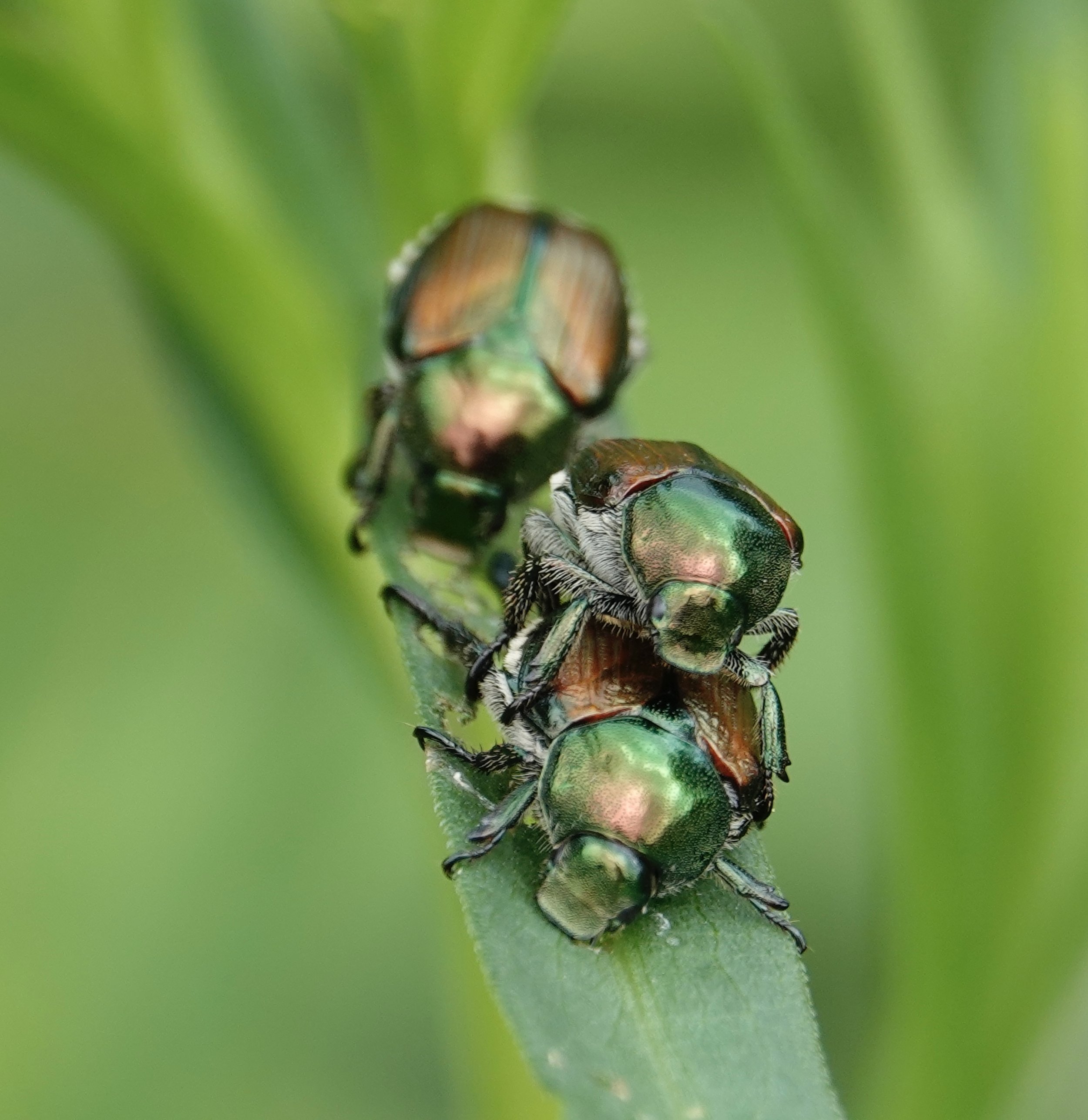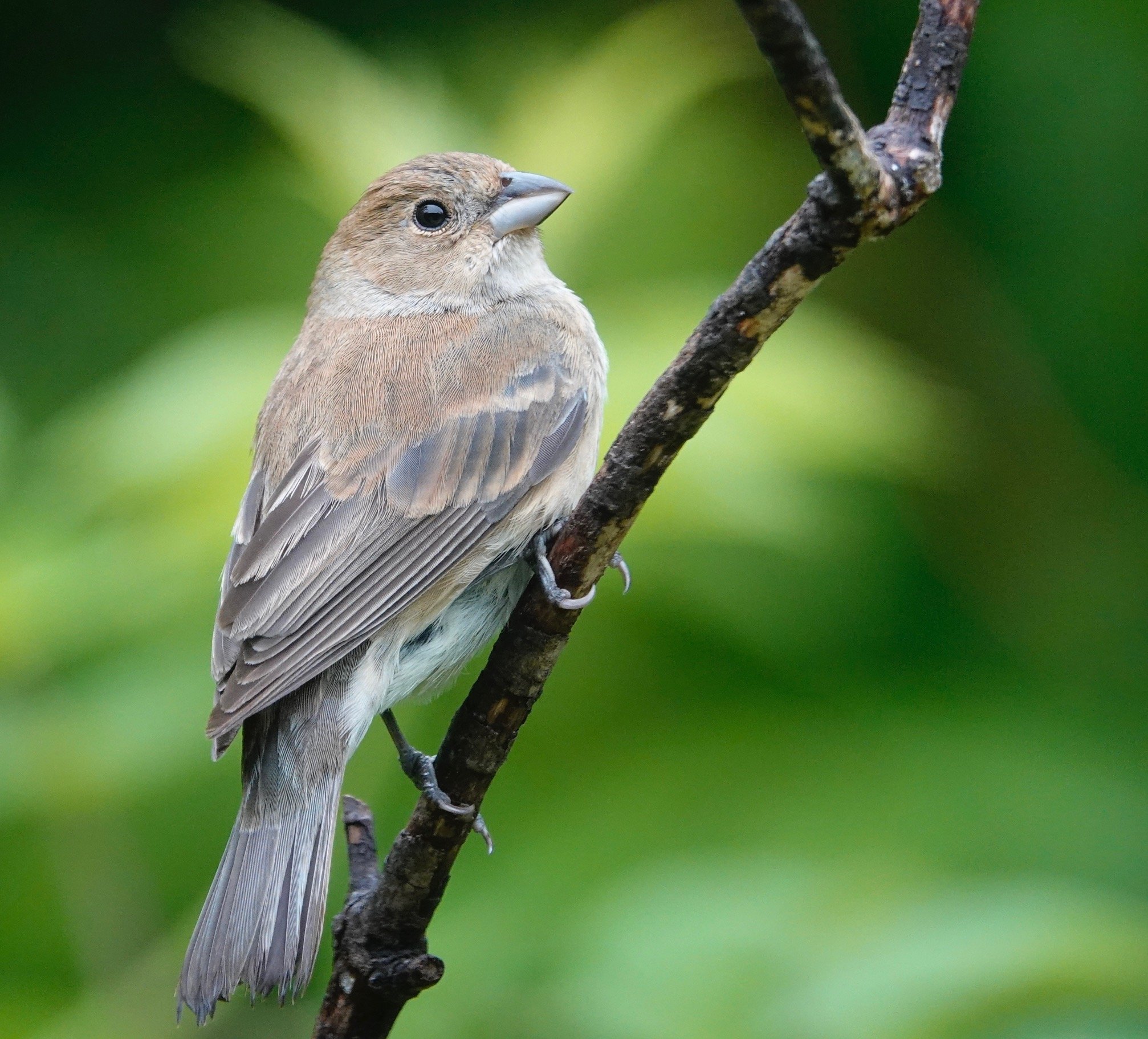It’s vulturific
It’s vulturific
Nature by the yard
The new crop of chipmunks looked impressive.
Young robins swamped the birdbath. The enthusiastic and pugnacious birds were splishing and splashing.
Chickadees and cedar waxwings kept the yard entertained. Waxwings are named for the waxy red tips on their secondary wing feathers. According to Doug Tallamy, professor of entomology and wildlife ecology at the University of Delaware, a pair of chickadees needs 6,000 to 9,000 caterpillars to raise one brood. Insects are best for feeding fledglings because chickadees can’t afford pizza or cheeseburgers.
The sultry afternoon didn’t stop the red-eyed vireo from singing, “Here I am. In a tree. Look at me. Vireo.” The ornithologist Bradford Torrey said, "The red-eye's eloquence was never very persuasive to my ear. Its short sentences, its tiresome upward inflections, its everlasting repetitiousness, and its sharp, querulous tone long since became to me an old story; and I have always thought that whoever dubbed this vireo the 'preacher' could have had no very exalted opinion of the clergy".
Most of our woodpeckers have black and white plumages, but the northern flicker is brownish with a white rump patch that's conspicuous in flight.
An eastern screech owl called persistently, waiting to go to voicemail. The pop-can-sized screech owl is all beak and eyeballs.
Grasshoppers rubbed their legs together—stridulation. Crickets and katydids used their wings to make music.
Naturally
I’d been watching roadside LBJs (Little Brown Jobs). Juvenile vesper sparrows are similar to adults, but their plumages contain little or no rufous color. They are larger than song sparrows and hit peak migration in October. Young horned larks are nondescript and look like what they aren’t. Horned larks molt out of juvenile plumage by August and resemble a washed-out version of an adult the rest of the year.
Migratory populations of sedge wrens have a nomadic breeding cycle. Northern breeding populations breed from May through June. Breeding occurs in the southern U.S. from July into September, coinciding with the departure of northern breeding populations. This suggests that sedge wrens migrate to their northern breeding range for the first nesting, then migrate farther south to nest again. The latter breeding season could be by late arrivals or in response to habitat quality in the southern portion of the range.
Vulturific
The first Saturday in September each year is International Vulture Awareness Day. Vultures are recyclers and prevent the spread of harmful bacteria. They have acidic stomachs that kill harmful bacteria in rotting meat and their intestines have bacteria that make them resistant to diseases from rotting meat. Vultures commonly eat roadkill, making them targets for car collisions. Please avoid littering, which attracts animals onto the roads.
Everyone is important
The American biologist Paul Ehrlich likened the loss of species from an ecological community to randomly popping out rivets from the wing of an airplane. Remove one or two and the plane will probably be fine. Remove ten, or twenty, or fifty, and at some point, there will be a catastrophic failure and the plane will fall from the sky.
Q&A
“What are predators of adult hummingbirds?” Cats, sharp-shinned hawks, bullfrogs, merlins, roadrunners, kestrels, spiders, snakes, robber flies and occasionally dragonflies and songbirds.
“Do bees sting hummingbirds?” Bees could sting hummingbirds, but it would be a rare occurrence as both creatures are too focused on gathering nectar to look for a fight. Hummingbirds avoid bees by being agile and using quick flight movements, tail flicking or aggressive displays. Hummingbird feeders attract both and bees feed alongside the hummingbirds, but will chase them if they feel threatened. When many bees are at a feeder, the hummingbirds opt to leave and find other nectar sources. Red attracts hummingbirds while yellow attracts wasps and bees. Avoid feeders with yellow insect guards or flower accents to make your feeder will be less attractive to insects.
“Why are there tiny holes in acorns?” It’s because acorns are tiny. If the holes were big, there’d be no acorns left. Acorn weevils chew a small hole in the acorn while it’s attached to the tree, lay an egg in the hole and plug it to camouflage their activity. After the eggs hatch, the larvae feed on the inside of the acorn, which can make the acorn non-viable. When the acorn falls to the ground, the weevil larvae chew their way out, creating a perfectly round hole, and burrow into the soil to spend the winter underground. The reason you find many holey acorns under trees is because the squirrels leave them behind.
Thanks for stopping by
“A true leader is one who is humble enough to admit their mistakes.”—Author unknown.
“Joys come from simple and natural things; mist over meadows, sunlight on leaves, the path of the moon over water. Even rain and wind and stormy clouds bring joy.”—Sigurd F. Olson.
Do good.
©️Al Batt 2023
A tall white bird with a yellow bill, black legs and long S-curved neck has made the great egret a chiropractor’s dream. At the beginning of the 20th century, it neared extinction due to market hunting. The egrets’ feather plumes were used to adorn women's hats. The great egret has been called the American egret, common egret and great white egret. Photo by Al Batt.
It did what a December 15 tornado does
One side of a block of the main drag of Hartland, Minnesota, is now leveled from my brother’s old hardware store through the beauty shop, post office and one of L&D Ag buildings (once upon a time it was Thompson Brothers Gas Station—it was a Texaco).
Now the city of 314 will have room for a five-story parking ramp.
I miss these murals depicting Hartland’s past. They went down with one of the buildings.
Would you like some nectar, Hector?
Would you like some nectar, Hector?
Naturally
I watched a murmuration of starlings move as if it were inside a lava lamp, which made me think of hummingbirds. That’s because it’s a small world after all. In Minnesota, four native plant species—eastern columbine, Indian paintbrush, jewelweed and cardinal flower—rely on hummingbirds for pollination. The ruby-throated hummingbird’s wings beat an amazing 53 times every second and its heart throbs 1,260 times a minute.
I had a pleasant visit with Donald Mitchell and Ron Windingstad at the wonderful Henderson Hummingbird Hurrah in Henderson, Minnesota. I didn’t find out if all male hummingbirds are named Hector, but I tried.
Mitchell conducted field studies of hummingbirds and the plants they pollinate, and is a hummingbird bander. He said to attract hummingbirds, it's best to create a nectar farm that maximizes the amount of nectar available. One way to do this is to plant many red, tubular flowers that bloom in mid to late summer. Advertise your nectar farms with red flowers and the red on hummingbird feeders. Mitchell has seven hummingbird feeders located outside his home near Red Wing. In September, he goes through a gallon and a half of nectar every day. According to him, adding red dye or boiling the water is unnecessary. You can create the nectar solution by mixing 4 parts of water with 1 part of table sugar. You don't need to be too strict with those measurements. Ratios like 3:1 or 5:1 could be used.
Mitchell listed hardy perennials native to Minnesota that thrive in Zone 4: columbine, red buckeye, coral bells, trumpet honeysuckle and royal catchfly. Bee balm is recommended as its runners can be transplanted in spring, summer or fall. The native monarda attracts pollinators but is often overlooked by hummingbirds. Tall larkspur, standing cypress, cardinal flower and penstemon are other great choices. Anise hyssop is a native plant that's perfect for pollinators but not ideal for hummingbirds. Mitchell said perennials form the backbone of a hummingbird garden. In order of bloom: Eastern columbine (native and hardy), coral bells, bee balm (select red flowered mildew-resistant cultivars), tall larkspur (also pollinated by bumblebees), royal catchfly and cardinal flower.
Annuals include salvia (avoid fall-blooming salvias) with scarlet sage being an excellent choice. Flowering tobacco isn’t red but is a fine hummingbird plant as long as the scented species and hybrids are avoided as they are moth-pollinated and short on nectar. Propagating annuals such as salvia, flowering tobacco, canna (with small red flowers) and standing cypress is quite easy. Hummingbirds love jewelweed, but it’s important to note that deer love to eat orange jewelweed (spotted touch-me-not).
Vines that make good hummingbird plants are trumpet or coral honeysuckle, trumpet vine, scarlet runner bean, cypress vine and cardinal creeper.
Chimney swift expert Ron Windingstad is a friend from way back. People refer to chimney swifts as "flying cigars" due to their short, stout bodies and long, pointed wings. They breed across much of eastern North America. They nest and roost in chimneys, but changes in chimney construction and the development of modern heating methods have reduced the availability of nesting and roosting sites for swifts, and consequently, their numbers. Windingstad helped construct over 100 artificial chimney swift towers. I remember him doing a cartwheel whenever he saw chimney swifts.
Q&A
Jack May of Mankato asked what kingfishers eat. Belted kingfishers feed on small fish (usually those less than 4-5" long), crayfish, frogs, tadpoles and aquatic insects.
“Why are squirrels gnawing on my deck?” They aren’t eating the deck; they’re gnawing it to wear down their teeth, which grow constantly. I watched squirrels gathering acorns. The acorns from the white oak family are the tastiest. Red oak acorns are nutritious but intensely bitter because they have more tannin. Research found squirrels eat about 85% of the white acorns and cache 60% of the red acorns. The white oak acorns sprout in the fall and are more perishable when buried. Red oak acorns don’t germinate until the spring.
“How far apart should bluebird nestboxes be?” The North American Bluebird Society recommends 125 to 150 yards apart with boxes mounted in pairs where tree swallows are abundant. Paired boxes should be placed 5 to 15 feet apart and provide nesting sites for both species and limit competition between them.
Thanks for stopping by
“Life cannot be classified in terms of a simple neurological ladder, with human beings at the top; it is more accurate to talk of different forms of intelligence, each with its strengths and weaknesses. This point was well demonstrated in the minutes before last December's tsunami, when tourists grabbed their digital cameras and ran after the ebbing surf, and all the 'dumb' animals made for the hills.”—B.R. Myers.
“The world is changed by your example, not your opinion.”—Paulo Coelho.
Do good.
©️Al Batt 2023
An orange butterfly with black markings is a monarch or it might be a monarch mimic—a viceroy, which has an extra black line extending across the lower wings, visible when the wings are open or closed. The monarch flies along with its wings held up in a shallow V, while the viceroy makes several quick flaps before a flat-winged glide. Photo by Al Batt.
Hartland versus the tornado
A tornado on December 15, 2021 destroyed this building, but the business is about to reopen and support the small town that has been its home for generations.
As Atlas held aloft the heavens, this payloader has held up a building that had suffered the ravages of a December 2021 tornado in Hartland, Minnesota. The payloader will soon be able to rest after the building comes down.
This lovely mural depicting Hartland’s past will be demolished along with the building it’s painted upon.
It’s called a kaleidoscope
Are snakes lacking ambition?
Naturally
I clung tenaciously to an agreeable day of incredible insect diversity. I noticed no wasp (hornet) looked cuddly and cabbage white butterflies weren’t everywhere, but they were trying. I looked up to check for winged ants. Cornfield and field ants swarm on late summer afternoons. Carpenter ants swarm in the spring.
Thistle seeds blew in the wind. The striking orange and black painted lady is one of the most common butterfly species in the world and is called the thistle butterfly. It migrates to warmer climates in winter. Goldenrod bloomed and isn’t the bad guy when it comes to causing hay fever. Sunflowers and compass plants followed the sun. Chokecherries provided astringent fruit. Sumac turned red and wild cucumber bloomed. Crabgrass, an annual that gets its name from its stems that spread outward and resemble the legs of a crab, showed a dark-reddish stain.
There are a lot of soybean aphids in the farmers’ fields of dreams, so there might be an influx of multi-colored Asian lady beetles this year. The aphids were accidentally introduced to the U.S. in the late 1990s. Its rapid spread was boosted by a nonnative plant, buckthorn, which was brought here as a nursery plant. Soybean aphids lay eggs in the fall on buckthorn. Several insects prey upon soybean aphid populations. These include the lady beetles and minute pirate bugs (often called no-see-ums). The multi-colored lady beetle is the nonnative ladybug that swarms into our houses in the fall.
Japanese beetles feed on over 350 species of plants, eating flowers and fruits, but they commonly chew around the veins of the leaves, skeletonizing them. They prefer foliage in full sun and love wild grapevines.
Q&A
“Why aren’t there any snakes in Alaska?” No ambition. There have been occasional reports of garter snakes in the panhandle.
“One of my hens laid a double-yolk egg. Could it hatch?” It’s possible to hatch two chicks from the same egg if it contains two yolks. However, the chance of this happening is extremely rare because only one embryo develops in most cases. One might survive and it could have physical challenges.
“Do barred owls and great horned owls coexist?” Great horned owls kill and eat barred owls they find in a great horned’s territory. Great horns are remarkable creatures that begin nesting in January or February, using the nests of hawks, crows or squirrels, small caves, cliff ledges, hollow trees, bridges and buildings. Owlets move out onto branches near the nest at 6 weeks of age and don't fly well until 10-12 weeks old. Female owls lay 1 to 5 eggs, which hatch in 30 to 37 days. Barred owls begin nesting in March. They nest in hollow trees, abandoned nests or nest boxes. The female lays 1 to 5 eggs, which hatch in 28 to 33 days. Young leave the nest 4 to 5 weeks after hatching. Barred owls have dark eyes; all other Minnesota owls have yellow eyes.
“How can I discourage boxelder bugs from congregating on my house?” This native insect feeds on boxelder, maple and ash trees. They love the warm sun on buildings with southern and western exposure. Adult boxelder bugs can fly several blocks and may travel as far as two miles. A simple solution is to add Dawn liquid dishwashing soap to a spray bottle full of water and shake gently to combine. Spray directly on the bugs and it will kill them.
“How many species of mosquitoes are there in Minnesota?” There are 51 species in the state. Spring species produce one generation of mosquitoes a year, and the adults can live 3 to 4 months. They lay eggs in the summer and those eggs need to freeze before they can hatch. Summer species can have multiple generations per year, each usually living only a few weeks. I’ve heard no neighbor complain this year, “The mosquitoes are the worst I can remember.” I haven’t even thought about putting an electric fan on the deck to keep the weak-flying skeeters at bay. It’s only fair that mosquitoes bite me. I’ve eaten enough of them while bicycling, running or seated behind the wheel of a cabless tractor.
“What is a group of butterflies called?” It’s called a kaleidoscope, flutter, swarm or rabble.
“When do kestrels migrate?” The American kestrel peak migration is late August—early October. The name kestrel is likely derived from the Old French word crecelle, meaning "rattle," which refers to the sound of its cry.
Thanks for stopping by
“Because the heart beats under a covering of hair, of fur, feathers, or wings, it is, for that reason, to be of no account?”—Jean Paul Richter.
“Use the talents you possess, for the woods would be a very silent place if no birds sang except the best.”—Henry Van Dyke.
Do good.
©️Al Batt 2023
Chicory grows in open and disturbed areas like fields, roadsides and railways, and blooms July—October. The flowers open with the sun and close by noon on sunny, bright days and open later in the morning or remain open most of the day during cloudy weather. Its roasted roots are used as a coffee substitute. It’s called blue daisy and blue dandelion, but more often blue sailors, from a legend of a beautiful girl falling in love with a sailor who left her for the sea. She waited alongside a road for his return. The gods took pity on her and turned her into chicory. Sailor blue blossoms still haunt roadsides waiting for the man’s return. Photo by Al Batt.
Look for GAS—Goldenrod, Aster, Sunflower
Naturally
Hummingbirds thrill me. They are aggressive jewels. The hairs on my arms tell me it’s a cool sighting each time I catch a glimpse of one. I watched them from my office window and marveled at their maneuverability. The presence of a single hummingbird makes any scenery stunning.
I walk late at night after work in order to escape the heat of the day. Our summer heat is gentle when compared to elsewhere, but it’s enough for me. I listened to the descending whinny and an even-pitched trill of the eastern screech-owl as I watched a beetle under the yard light. A beetle has wing covers (elytra), which usually make a straight line down its back. One of my favorites is a tiger beetle that chases down its prey. The ones in my yard are fast, but not as fast as the Australian tiger beetle, which travels at 5.6 mph.
Skunks root around with their noses in the soil and dig small funnel-shaped holes in the ground. Raccoons use their paws like hands, digging, lifting and tearing off chunks of sod and flipping them over to hunt for grubs. It’s as if they are working on a sod farm.
On the road, I look for GAS on every drive—Goldenrod, Aster, Sunflower. Roads change habitats. Roadkill provides food for crows, vultures, raptors and coyotes. The ditches preserve prairie ecosystems from the plow and development.
It was boy meets squirrel. A thirteen-lined ground squirrel scurried across the road. Colloquially known as a striped gopher or squinny (less frequently as liner, streaker or grinner), it spends more of the year asleep than awake. Adults enter hibernation in August or September and don’t emerge until April. Females may remain awake longer than males and the young of the year longer than the adults. The thirteen-lined ground squirrel, true to its name, has a series of lines running down its back. It’s a prairie species that has adapted well to roadsides, pastures, hayfields, ditches and golf courses. During the summer, they’re commonly seen on roadsides. The University of Minnesota teams are nicknamed the Golden Gophers. The mascot looks like a chipmunk but is likely a ground squirrel and not a gopher. It has stripes. Maybe the coaches would have enhanced recruiting success if young athletes could play for the Golden Ground Squirrels. Or maybe not.
Q&A
“Can I see the chiggers that bite me?” Chiggers are microscopic and almost impossible to see with the naked eye. At around 1/50th of an inch in size, most people need a magnifying glass or microscope to spot them. The mites resemble tiny, red spiders. Mosquito repellents don’t work on them. By the time you have a reaction, the chigger is gone.
“What do fireflies eat?” Firefly larvae eat snails, worms, slugs and other insect larvae, which they inject with a numbing chemical meant to disable. Adults eat other fireflies, nectar or pollen, although some don't eat at all.
“Why are insects attracted to lights? Insects are drawn to bright lights because
the lights confuse an insect’s navigational system, just as traffic lights confuse the navigational systems of humans. Many insects are phototactic, which means they experience movement toward or away in response to light. A popular theory says positively phototactic insects move toward lights because the lights act as guides. Many insects find their way by keeping a natural light source, such as the sun or moon, in their sights. They might mistake an artificial light for a celestial object. Insects swarming around porch lights are positively phototactic, attracted to the light. In contrast, insects like cockroaches are negatively phototactic and scuttle away when a light is turned on. Another hypothesis proposes insects use lights as an escape route. If a predator were to frighten a resting insect, it would fly toward the moon where the predator couldn’t reach it. Bug zappers attract a lot of phototactic insects, but few are mosquitoes. While mosquitoes are attracted to light, they are more drawn to food sources like you.
“Why do phoebes wag their tails?” A study found tail pumping informs predators that the phoebe is aware of them. Other birds dip, wag, teeter, bob or pump tails: palm warblers, pipits, wagtails, spotted sandpipers, waterthrush, hermit thrushes, American kestrels and others. Why do they call attention to their south ends? Threat awareness as the phoebe does, to startle prey into motion, to maintain balance and reasons unknown.
“Why are they called rough fish?” The term "rough fish" apparently dates back to commercial riverboat fishing in the 1800s. Sluggish, overweight boats lightened their loads when required by "rough-dressing"—removing the organs but not fileting less desirable species and discarding them.
Thanks for stopping by
“Sunset is still my favorite color, and rainbow is second.”—Mattie Stepanek.
“Blessed are they who see beautiful things in humble places where other people see nothing.”—Camille Pissarro.
Do good.
©️Al Batt 2023
The aggressive eastern kingbird (Tyrannus tyrannus) is known for its habit of chasing potential predators and brood parasites, which it detects from its prominent perch. It uses exposed perches to watch for flying insects which it sallies forth to snap up. An eastern kingbird is a flycatcher. The collective noun for flycatchers is an outfield, swatting, zapper or zipper. Photo by Al Batt.
Another day at the Freeborn County Fair
What has cucumber-like spiny pods?
Nature by the yard
I use a heated dog dish as a birdbath. It thinks it’s a birdbath and I don’t have the heart to tell it otherwise. It works great even when its heater is on a summer vacation. That tiny body of water has brought me much pleasure. An orchard oriole spent time in the dish, splashing with a gusto nearly matching that of a Baltimore oriole. Then at dusk, an eastern screech-owl visited the pool. The tiny owls regularly use birdbaths for drinking and bathing. So many creatures use that birdbath, it wouldn’t surprise me if one of those ancient U.S. Navy frogmen that were available as toys in boxes of Kellogg's Corn Flakes and Kellogg's Frosted Flakes showed up. Little me put high-pressure propellant (baking powder) in a frogman’s foot and he went diving. A miniature frogman might be too much to hope for, but you never know what you’ll see when you watch birds.
Naturally
Lots of pelicans mean lots of bullheads in the lake. Lightning bugs or fireflies are neither bugs nor flies. They are beetles. Look for meadowhawk dragonflies to become common. On a warm August evening, common nighthawks fly graceful loops in the skies over the fairgrounds where I toiled. Their sharp, electric “beans” let me know they were chasing insects. Adult male hummingbirds and rose-breasted grosbeaks will soon scram, and robins will form flocks.
What’s that sound?
Bird songs have quieted, but insects call loudly to be heard. It’s usually the male that calls and the intensity increases at dusk and continues through the night. They aren’t using their voices, they use stridulation, the act of producing sound by rubbing two body parts together. The most well-known insects that stridulate are crickets. The snowy tree cricket, which is pale in color, inhabits woodland edges, bushes, small trees and vines. Often called the “temperature cricket” because it’s possible to tell the temperature by adding 40 to the number of chirps heard in 13 seconds. Nathaniel Hawthorne described its song as an "audible stillness" and declared, "If moonlight could be heard, it would sound just like that." Producers of movies and TV shows frequently dub its song onto soundtracks to signal that the action is taking place on a quiet summer's night in a rural or suburban setting.
The field cricket is a common household insect. This accidental invader is a large, shiny black cricket. It produces its chirping by rubbing its wings together to create the quintessential cricket song.
Katydids, resembling muscular green grasshoppers, call ch-ch…ch-ch-ch…ch-ch-ch. This is likened to the words ka-ty-did or ka-ty-didn’t.
A gray treefrog hunted on my office window on a warm night. The light attracted insects and that attracted the green predator (they come in various colors). I’ve been hearing their calls—territorial, I suspect.
Blooming but not idiots
Wild cucumber is a native, annual vine with hand-sized, star-shaped leaves. In early to mid-August, conspicuous small white to yellowish-green flowers grow. It’s noticeable along roadsides, forest edges, hedgerows and fences. The fruit is a small, cucumber-like spiny pod. Common burdock blooms. Tall woody perennials called meadowsweet bloom in white. Many yellow flowers can be seen now: black-eyed susans, yellow sweet clover, various species of sunflowers, common mullein, birds-foot trefoil, evening primrose and sow thistle. Expect to see goldenrod and asters blooming soon.
Q&A
“How many generations of monarch butterflies are there in Minnesota?” It takes monarchs approximately one month to go from egg to adult butterfly and there are usually four generations emerging throughout the year, three of which could be in Minnesota. The first three generations have lifespans of 2-6 weeks, with the fourth generation living 6-9 months and migrating (beginning in mid-August) to Mexico.
“How many cicadas can a cicada killer paralyze?” In a good year, the female wasp may create and fill more than a dozen nesting chambers, and may hunt and kill over 30 cicadas.
“Do you think the ivory-billed woodpecker still lives?” I don’t know. I hope so. It’s difficult to prove something doesn’t exist—take Bigfoot, for example.
“When do pheasants begin incubating eggs?” It generally occurs from April 1 through August 1, with an average hatch date of mid-June.
“Why so few mosquitoes this year?” Dry weather makes for less standing water for the skeeters to use for reproduction.
Thanks for stopping by
“Away, away, from men and towns, To the wild wood and the downs, — To the silent wilderness, Where the soul need not repress its music.”—Percy Bysshe Shelley.
“May the sun bring you new energy by day, may the moon softly restore you by night, may the rain wash away your worries, may the breeze blow new strength into your being, may you walk gently through the world and know its beauty all the days of your life.”―Apache blessing.
Do good.
©️Al Batt 2023
What is a herd of goats doing at St. Aidan Cemetery? Eating. Goats are browsers, not grazers, so they won’t mow your lawn, but 40 goats per acre will in a week’s time clear it of buckthorn, poison ivy, thistle, wild parsnip, ragweed, red cedar, garlic mustard and other brush and weeds. Photo by Al Batt.
The Freeborn County Fair is fairly fabulous
The original cracker barrel.
A hummingbird is a deadbeat dad
Naturally
Barn, bank, cliff and tree swallows are aptly named. Barn swallows nest in buildings. Thomas Jefferson called them American swallows. The barn swallow is the national bird of Austria and Estonia. In many cultures, a barn swallow nest in a barn or on a house is considered good luck. A Native American legend tells of a barn swallow that dared to steal fire from the gods and give it to man. In anger, the gods shot flaming arrows at the bird. One hit the swallow in the tail, burning away the central tail feathers. Since that day, the barn swallow has had what we consider a swallowtail. Cliff swallows nest on natural cliffs and manmade structures, such as bridges, culverts and sides of buildings. Bank swallows nest in financial institutions. Not really. They prefer exposed vertical sandbanks and bluffs. Tree swallows nest in dead trees, woodpecker holes and nest boxes. The name “swallow” is likely derived from the old English “swell,” meaning to swirl, a reference to the bird’s swooping flight, or from the old Norse “swala,” meaning a cleft stick, referring to its tail.
The Eagle Lady
I was thinning files when I came across a nice note from Doris Mager. I met Doris years ago. In 1979, she perched among the branches of a gangly pine for a week in a sturdy, inactive bald eagle nest 50 feet off the ground in Florida. Doris didn’t do this because no hotel rooms were available. She did it to call attention to the plight of the bald eagle, as a fundraiser and because she’d always wanted to sleep overnight in a nest. She’d devoted the previous 17 years of her life to rescuing and rehabilitating raptors. The Eagle Lady raised the funds needed to complete the construction of the Audubon Center for Birds of Prey.
Q&A
Ken Nelson of Clarks Grove asked when Baltimore orioles leave. As Baltimore oriole babies become independent, parents molt body and flight feathers, and some migrate in July. Migration for Baltimore orioles peaks in August and September.
“When do I hear cicadas in Minnesota?” We hear the sound of a distant buzz saw of the dog-day cicada in early July and it continues into September. Folklore says when you hear the first song of a dog-day cicada, frost is six weeks away.
“Do rootworms come at the time we first see fireflies?” It’s a common belief that the presence of fireflies in the evening is a signal that corn rootworm eggs might be hatching. The presence of lightning bugs doesn’t always mean that egg hatch is occurring.
“Does a male hummingbird help the female with nestlings?” Hummingbird moms are single mothers. Male hummingbirds provide no care to their offspring. They’re deadbeat dads. A father hummingbird is a faux pa. The female uses moss, lichens, grass and spider webs to build a nest in which she lays two tiny eggs.
“How does weather impact pheasants?” Hen health is of the utmost importance for a robust population. Egg laying, nesting, re-nesting and brood-rearing are taxing on hens. A mild winter allows hens to begin the spring reproduction season in top shape. The average clutch is 12 eggs. If a hen loses her nest due to cold weather, predation, haying or flooding, she’ll re-nest up to two times. A second effort averages eight eggs in a clutch, while a third re-nesting produces four to six eggs. Photoperiod is the primary factor, but temperature also affects when pheasants nest. An early spring could accelerate the pheasant nesting season by a few days. If the weather in April, May and June is warm and dry, hens have a good chance of pulling off successful first nests. Spring rain and cold weather affect chick survival, as they can't control their temperature until three weeks old. Pheasants have an annual survival rate of 50%, even lower in areas with inadequate habitat during a severe winter. Half the chicks don’t survive until fall due to predation or mortality from farm machinery and automobiles. By 17 or 18 weeks of age, chicks resemble adults in plumage. The winter wind that creates biting wind chills can be a blessing, as it blows farm fields free of snow and uncovers food. Hot dry summers can impede insect production, depriving chicks of the protein they need early in life. Drought conditions stunt vegetation growth, reduce the amount of cover and leave pheasants vulnerable to winter storms. Precipitation is essential, but too much or the wrong time can be the difference between a great and poor pheasant reproduction year.
Thanks for stopping by
“No matter how deeply you come to know a place, you can keep coming back to know it more.”—Rebecca Solnit.
“The best part of the journey is the surprise and wonder along the way.”—Ken Poirot.
Do good.
©Al Batt 2023
This eastern wood-peewee is a flycatcher with whitish wing bars and usually a pointy crest at the back of its crown. It whistles PEE-a-WEE and a down-slurred PEE-yer throughout the day. The similar eastern phoebe has a rounded head, indistinct wing bars, bobs its tail and calls its name with an insistent raspy “phoebe.” A pewee's bill has a yellowish-orange lower mandible and a blackish upper mandible, whereas the phoebe's bill is all dark. Photo by Al Batt.
We have received a welcomed rain.
Another day at the county fair with this humble correspondent
People were tasked with a mission improbable. They were given a bucket of junk and asked to make art. And did they ever!
Fair fare.
Awww…baby chicks.
The red and white stripes of the barber pole originated from a practice known as bloodletting. This practice involved drawing blood from a patient to treat an ailment. The red and white stripes represented blood and bandages, while the barber pole symbolizes the instrument people gripped onto during the procedure. Many barber poles have a blue stripe, which is likely a display of patriotism (the colors of the American flag).
From the Freeborn County Fair in Albert Lea, Minnesota
This unpretentious little barn has the capability of unleashing one of the most powerful forces for good known to man…the maple nut ice cream cone. Freeborn County Fair in Albert Lea, Minnesota.
A Bruno’s Corn Dog is a traditional; fair fare for me.
Ole and Lena are famous in Minnesota because of the endless supply of Ole and Lena jokes. This Ole and Lena are not those people and their onion rings and cheese curds are no joke. They are delicious.
This world-class popcorn has been provided to fairgoers by three generations of popcorn makers. It’s mighty good and then some.
Security abounds at the Fair.
A lot of people might find this tool useful after they take a long hike around the fairgrounds on a hot day.
Some wit had turned the “H” in “WITH” backward.
I love this from the 4-H Building.
Are woodpeckers obsessed with knock-knock jokes?
Naturally
I watched a ruby-throated hummingbird feeding. Pound for pound, a hummingbird isn’t. The miniature marvel weighs less than a #2 wooden pencil, a marshmallow or an AA battery.
After swallows finish nesting, they begin to gather in pre-migratory groups on utility wires in late July. They chatter excitedly about the gift of another day before starting a meeting without a single doughnut. It’s a migration planning session, covering the ins and outs of air travel, what to do in case of a hawk emergency and whether to eat dragonflies with wings on or wings off. The young stay with their parents during a diurnal migration undertaken by a flock. They leave here July-September so they can feed on flying insects with some swallows flying as far as Argentina.
Nature by the yard
There were two wild turkey hens with 15 poults in the yard. I see hens who have merged their families in the summer to raise and defend the poults. You who are members of a family or know someone who is a member of a family recognize that teamwork aids the survival of youngsters who can fly at 10 days of age. A hen will fake a broken wing to distract predators from her poults.
I watched a Baltimore oriole father showing three of his fledglings how to come clean in the birdbath. Two of them took to taking a dip like ducks to water. The third one, not so much. Pa left with the two swimmers, but the one with the dry feathers stayed behind to find a snorkel. He watched as a blue jay and a robin took their turns landing on the perching stone and splashing around. The hesitant oriole made a half-dozen attempts before finally landing on the stone. The bird touched one foot to the water and frightened itself away. No spot on the medal podium for it. I’ll save my applause for another time.
Bits and pieces on birding
John Lillich told me he’d happened upon a man on an Ohio nature trail who would have been naked if it weren’t for the binoculars around his neck. The man introduced himself as a naked birder.
Never put sunglasses or binoculars on the roof of your car. Sooner or later, you will forget them. If you need to rest them somewhere, set them against the windshield.
Are woodpeckers obsessed with knock-knock jokes?
If you can see birds, you should look at them.
Does a crow have cawer ID?
The song sparrow lives up to its name by being a persistent singer. Its scientific name Melodia means "singing" in Greek.
Q&A
“I know a chickadee and a killdeer call out their names. Do any other birds?” Humans gave birds names that were often imitations of their songs/calls, yet there isn’t a single bird species named chirp. Many suggest their names, some might require an imagination. Some of those birds are the phoebe, peewee, towhee, cuckoo, jay, bobwhite, kiskadee, willet, curlew, whip-poor-will, chuck-will’s-widow, hoopoe, kittiwake and chachalaca. Crow might be imitative of the bird's cry. A hummingbird should be on a list of birds with onomatopoetic names.
“What’s an easy way to tell a raven from a crow?” First, check the range maps. The much larger common ravens can be distinguished from American crows by their massive bills; by their tails, which come to a V (like the V in raven) behind them; and by their croak compared to a crow’s caw.
“Do monarch caterpillars use Indian hemp as a host plant?” Indian hemp is dogbane, the names referring to its supposed toxicity to dogs and its similarity to hemp. The perennial plant's strong fibers have made it prized for cordage and threads. Young dogbane plants are often mistaken for milkweed. Injured Dogbane oozes a white sticky sap with the consistency of latex paint. It’s native to Minnesota and was once thought to be a larval food for monarch butterflies, but research has shown that while female monarchs occasionally lay eggs on this species, their offspring will not mature on it. Dogbane grows 5 feet tall and blooms in white flowers in June-August. I enjoy seeing the iridescent, dogbane beetles on dogbane. The gold, blue, green, yellow and red insects are stunners.
“What are the tallest ferns?” It could be Fern Johnson. She used to be 6-2, but she might have shrunk with age. I don’t know another tall Fern, so you must be talking about plants. The ostrich fern grows up to 5 feet tall and the interrupted fern up to 4 feet.
Thanks for stopping by
“No matter how deeply you come to know a place, you can keep coming back to know it more.”—Rebecca Solnit.
“The best part of the journey is the surprise and wonder along the way.”—Ken Poirot.
Do good.
©️Al Batt 2023
The small, slender and long-tailed chipping sparrow is a beauty. Edward Forbush, a 19th-century ornithologist, called the dainty chippie “the little brown-capped pensioner of the dooryard and lawn, that comes about farmhouse doors to glean crumbs shaken from the tablecloth by thrifty housewives.” Its song is a rapid, mechanical-sounding trill. The chippie is nicknamed the “hair bird” because of its habit of lining nests with horse hair from deer, cows, horses and other mammals. Photo by Al Batt.
A skunk enjoyed a feast of mulberries. It didn’t raise a stink about the service.
A bee hotel.
A Double-crested Cormorant’s wings become waterlogged and it must wash and dry.
Mallards look for shade on a blistering, hot day.
I was listening for “Turkey in the Straw,” but found poults in the grass. Wild turkeys.
Long-horned bee.
It’s orange.
The strikingly handsome red-headed woodpeckers weren’t in numbers high enough to cause anyone to consider a hunting season
THEY’RE CHIRPER BY THE DOZEN
Naturally
I walked after dark. I walked after light, too. The yard bombilates day and night—the insects make a humming or buzzing noise. Not everything comes to those who wait, but mosquitoes do. I enjoy the finer things in life—fireflies, shining stars come to Earth to keep us company.
Earlier, a sliver of blue as intense as a summer sky zoomed by—a blue jay off on its daily errands. It made me feel like a star witness. I employ a lot of bird feeders because they’re chirper by the dozen.
House wrens sang a hymn to a summer day. Their songs came from everywhere and from nowhere. Other voices joined—robin, common yellowthroat, American redstart, red-eyed vireo, indigo bunting and goldfinch. A catbird practiced his repertoire. Fledged chickadees and their tuckered parents are a treat to watch and listen to.
For 30+ years of Junes, I’ve done a Breeding Bird Survey (BBS) covering parts of Mower, Freeborn and Steele Counties. I hope for a calm day, but some years the wind makes the tall grass dance the hula. A BBS is a frolicking foray away from life’s accustomed roads and a practice in mindfulness. I start at 5:02 a.m. and make 50 stops for 3 minutes each and tally every bird I see or hear. Like most things in life, it’s important to listen. Each year, the red-winged blackbird has been the bird I’ve counted most often. A BBS never fails to thrill and surprise. I heard a willow flycatcher call “Ah-choo.” Sandhill cranes appeared as usual, but trumpeter swans did not. I see one chimney swift each year—just one. The strikingly handsome red-headed woodpeckers weren’t in numbers high enough to cause anyone to consider a hunting season, but I saw a bunch. The collective noun for woodpeckers is a descent. I see a descent of flickers in my yard each year, but the red-headed woodpeckers were cleverly spaced for my constant amazement. I love a BBS—it keeps my 3-minute egg timer employed.
Japanese beetles are beautiful botherations that feed on over 300 plant species. I’ve read that starlings are prime predators of adult beetles. Garter snakes and grackles were mentioned. Japanese beetle white grubs feed on the roots of lawn grasses from June through the fall and skunks and raccoons tear up a lawn in pursuit of the grubs (crows eat any grub they find in those excavations) and chickens have plucked a few adults, but what else eats adult beetles?
Q&A
“Did the chipmunk get its name from its call?” Possibly. It's believed that the English word "chipmunk" was derived from "chetamnon," the name given to the animal by peoples of the Chippewa nation or from the Ojibwe word ajidamoo, which translates as "one who descends trees headlong."
“How can I make a puddling station for butterflies?” Fill a shallow clay or plastic bowl or saucer with sand. Mixing in a handful of compost adds more important nutrients. Add a few flat rocks to provide perches. Pour enough water into the container to moisten the sand. You might make it more attractive by adding overripe fruit like bananas and oranges. It could attract raccoons.
“I saw a squirrel lying on a branch in the shade with its legs splayed. What’s going on there?” This thermal regulatory behavior is called "splooting." An animal finds a cool surface and lies down on its stomach with legs spread to cool off. By putting as much of its core body on a cool space, the heat is transferred from its body to that surface. You'll see squirrels on a shady sidewalk, trail, branch or grass. The term sploot might derive from the word splat because of the splat-like (flat, spread-out) appearance of a sploot pose. Dogs and cats sploot, too. Splooting allows pets to cool themselves by pressing their belly onto the ground or against tile floors.
“Do purple martins eat 2000 mosquitoes a day?” Martins feed at 150-500 feet, which is higher than where mosquitos live. They eat a few mosquitoes, but not thousands. Purple martins forage during the day, while mosquitoes are most active during the evening. There isn’t much overlap in their schedules. Martins eat beetles, dragonflies, damselflies, cicadas, grasshoppers, katydids, moths, butterflies, wasps, stink bugs, mayflies, bees, midges, horseflies, termites, red fire ants and other insects.
“What is a mnemonic for a meadowlark?” A mnemonic is a sequence of words to help us remember something. The eastern meadowlark’s is, “I-DO-love-you spring-of-the-year.” The western meadowlark’s is, “Hip! hip! Hurrah, boys! Three cheers!”
Thanks for stopping by
“It’s amazing how lovely common things become, if one only knows how to look at them.”—Louisa May Alcott.
“Stop. Look. Listen. You are surrounded by countless little blessings but you’ll miss them if you don’t pay attention.”—Ruth McPherson.
Do good.
©️Al Batt 2023
Some might consider it an LBJ—a “Little Brown Job,” but the song sparrow is a subtle array of browns that vary in appearance. It pumps its tail in flight and its serenading song is a “sweet, sweet, sweet” followed by shorter notes and a trill. Photo by Al Batt.
Hairy vine, no friend of mine.
Naturally
I enjoy a drumroll when I leave the house. Why not? A woodpecker was happy to provide one by drumming on a resonant limb like John Bonham on the day he graduated from the School of Hard Knocks.
Each day, I listen to an eastern wood-peewee and his slurred whistle, a plaintive “pee-ah-wee” or “pee-wee” falling in pitch at the end. I have named him Herman. He’s a peewee Herman.
I watched turkey vultures soar with limited flapping. In Tibet, vultures are considered angels who bring souls to heaven where they can be reincarnated.
Crown vetch is a legume native to Europe and Asia. It was introduced to the US in the mid-1800s, and by the 1950s became widely planted. In Minnesota, it’s been planted as a cover crop and used for soil stabilization on ditch banks. Crown vetch flowers vary from white to pink to lavender and bloom from May through August. Similar plants show violet-blue flowers on cow vetch (bird vetch), and blue and white on hairy vetch. The flowers of cow vetch and hairy vetch are arranged in a line along the stalk, unlike the clustered arrangement at the top of crown vetch. Crown vetch has a leaflet at the tip of its leaves and doesn’t have tendrils at the tips as cow and hairy vetch do.
Purple coneflower, black-eyed Susan, the vibrant orange butterfly weed and vervain bloom. Hoary vervain grows with stalkless leaves in clumps in dry habitats. It might be confused with blue vervain, which has smaller flowers, stalked leaves and prefers moist habitats. Both bloom June-September.
Good morning eyeshine
Eyeshine, a visible effect of the tapetum lucidum, enhances animals' visual sensitivity in low-light conditions. A great horned owl flew from the road in front of my car. Its eyes glowed yellow. There is an overlap of colors, but raccoons, coyotes, deer and cattle have yellow eyeshine. Dog’s eyes are yellow, green or blue and cats are usually green, but can be orange, yellow or red. Horses are green to yellow to blue. Rabbits, opossums and foxes are red. Deer, coyotes and walleyes flash white eyes. Even the wolf spider has stars in its eyes.
Barn swallows
I mowed the lawn in the company of dive-bombing barn swallows that swooped along with me. They called “click-it” repeatedly, as if reminding me to fasten my seatbelt on my push mower. The swallow is an insectivore with flies, grasshoppers, crickets, dragonflies, beetles, moths and other flying insects making up 99.8% of its diet. A single barn swallow can consume 60 insects per hour or 720 per day. That’s 20,000 fewer insects per month that might bother you in your yard. Older siblings sometimes help their parents feed their young from a second brood. A study by the University of Berne, the University of Geneva and the Swiss Federal Institute for Forest, Snow and Landscape Research found broods of barn swallows receive 250-350 food portions daily, each containing 15-20 insects. Parental feeding accounts for up to 100,000 flying insects. A barn swallow weighs as much as 7 or 8 pennies and has been clocked flying 46 mph.
Poison ivy
Poison ivy wears disguises. Sometimes it looks like a thick vine winding around a tree and climbing high into the air. Sometimes it looks like a bush or a shrub. Other times it carpets the ground. Its “leaves of three, let it be” leaflets can have smooth or toothed edges and turn red, yellow or orange in the fall. Its white berries provide food for birds. About 85% of people are allergic to the urushiol oil within the plant. It has a hairy vine. “Hairy (raggy) rope, don’t be a dope.” “Hairy vine, no friend of mine.” “One, two, three. Don’t touch me.” "Berries white, run in fright” “Leaves of three, let it be; leaves of five, let it thrive.” Poison ivy leaflets are normally in groups of three, while those of Virginia creeper are in groups of five.
Q&A
“Why aren’t more athletic teams nicknamed the Robins?” I don’t know. There should be more. The Atlantic Collegiate Baseball League once had the Peekskill Robins as a member. The Brooklyn Robins (1914-1931) were in the MLB’s National League. They changed their name back to the Brooklyn Dodgers in 1932. They’re now the Los Angeles Dodgers. Some football clubs in England carry the name Robins, albeit a different Robin than the American robin. The same could be said for a couple of Australian Rules Football clubs. Robbinsdale Cooper High School Robins sounds good, but they’re the Hawks. Robins, Iowa, doesn’t have a high school. The Robins Robins is a keeper, but a friend would call them the Orange-bellied Worm Pullers.
Thanks for stopping by
"The butterfly counts not months but moments, and has enough time."—Rabindranath Tagore.
"Leave the roads; take the trails."—Pythagoras.
Do good.
©️Al Batt 2023
The adult ring-necked pheasant rooster has an olive crown bordered by feathers elongated to form hornlike or earlike tufts, red wattles above and below each eye, iridescent purplish head and neck, and a white collar. It has a spur on each leg. This rooster crows loudly in spring and summer. Its crow is often followed by a loud, rapid beating of the wings and it frequently cackles when it flies. The pheasant is a non-native introduced to North America in the 1880s as a game bird. Photo by Al Batt.
What did chimney swifts do before there were chimneys?
Naturally
I listened to the whistling wings of mourning doves as they took flight. The doves can hit a high speed of 55 mph. I found a nest that had likely taken a mourning dove only a few hours to build and it looked like it.
I watched nesting red-shouldered hawks from a friend’s place in Ohio as we ate lunch on the deck. The raptors brought in snakes and chipmunks for the dining pleasure of their babies. A tufted titmouse flew into its nest in a crack of a tree to feed its babies. It wasn’t much more than an arm’s length away from me. A study conducted in Germany found the more we see and hear birds chirping and singing, the happier we are. A team at the German Centre for Integrative Biodiversity Research discovered that being surrounded by a variety of birds offers increasing life satisfaction comparable to $150 per week of added income.
Q&A
“Were their chimney swifts before there were chimneys?” Before European settlement brought chimneys to North America, chimney swifts nested in caves, cliff faces and hollow trees. They are among the most aerial of birds, flying constantly unless roosting or nesting. Swifts bathe in flight: they glide down to the water, smack the surface with their bodies, and then shake the water from their plumage as they fly away. When they rest, they don’t perch like most birds, but cling to the walls of chimneys and other vertical surfaces. Unmated swifts continue roosting together in the summer, sometimes in large groups, but the species doesn’t nest colonially. Only one breeding pair nests in any one chimney regardless of its size.
“How do I set the diopter on my binoculars and what is the best way to focus on a bird?” Close your right eye and, using only your left eye to look through the binocs, and adjust the focus wheel until the object is clear. Next, close your left eye and, using the diopter adjustment, bring your view into sharp focus. See the bird with your naked eyes and lock your eyes on it while bringing your binoculars up to your eyes.
“What is the biggest insect in Minnesota?” I recall playing softball in Maple Island, when a good number of 2- to 3-inch-long giant water bugs, drawn by the lights, landed on the field. A giant water bug is an enormous insect with noticeable foreleg pincers used to catch underwater prey like small fish, frogs, newts and snails. A strong bite injects a solution that liquefies the insides of prey, allowing the bug to drink it. Its dark brown body is flat and oval-shaped. Unable to hold its breath, small breathing tubes called spiracles allow the bug to stay underwater while drawing in air trapped under its wings, like a straw. It’s known for biting toes when disturbed or threatened by people, earning it the nickname “toe-biter.” I’ve heard them called “alligator ticks.” It might be the largest.
“What animals eat mulberries?” Robins, cardinals, catbirds, crows, blue jays, Baltimore orioles, foxes, raccoons, chipmunks, skunks, opossums, squirrels, wild turkeys, brown thrashers, eastern bluebirds, great crested flycatchers, northern mockingbirds, rose-breasted grosbeaks, cedar waxwings, indigo buntings, tufted titmice, scarlet tanagers, northern flickers and me.
“I was on the Pelican Breeze boat with you when you pointed out the cliff swallow nests on a highway bridge. Do any other birds use them?” The gourd-shaped structures made of mud have been used by house wrens, house sparrows, eastern bluebirds, house finches, Say’s phoebes and chestnut-backed chickadees. A flock of swallows is a swoop or a flight. I think gulp would be a fine collective noun.
“Loons on our lake had three eggs. Is that common?” They generally have two eggs. Clutches of three or four eggs are rare and are likely from two females or are two clutches laid at separate times by one or two females.
“Are those morning glories growing on my fence lines?” The morning glory vine gets its name from the flower’s habit of opening with the first rays of sunshine and closing when the heat of the day arrives. It’s an ornamental species and an annual. You’re likely seeing a perennial bindweed (field from Eurasia) or hedge (a native) with funnel-shaped flowers that bloom mostly in the morning. Plants creep along on an herbaceous vine that clasps onto any substrate. Bindweed is a perennial vine with white or pink-tinged flowers and arrowhead-shaped leaves while morning glory is an annual vine with white, pink, purple or blue flowers and heart-shaped leaves.
Thanks for stopping by
“The invariable mark of wisdom is to see the miraculous in the common.”—Ralph Waldo Emerson.
“We are not the same persons this year as last; nor are those we love. It is a happy chance if we, changing, continue to love a changed person.”—William Somerset Maugham.
Do good.
©️Al Batt 2023
Japanese Beetles are beautiful botherations that feed on over 300 plant species. I’ve heard and read that starlings are prime predators of adult beetles. Garter snakes and grackles were mentioned as predators. I know skunks and raccoons tear up a lawn in their pursuit of Japanese Beetle grubs (crows feed on any grubs they find in those excavations) and chickens have plucked a few adults, but has anyone seen anything eating the adult beetles? Photo by Al Batt.
Who are you calling a dickcissel?
Naturally
A great horned owl flew in front of my car at 4 a.m. The headlights washed out its color. Later, a common yellowthroat called, “Follow me, follow me. Wait up, wait up.” A catbird, appearing tastefully dressed in a stylish gray suit, added scat, a vocal improvisation of jazz.
There were flying TVs—turkey vultures as I walked in woods where ticks, mosquitoes and deer flies were my grizzly bears. I strolled around a lake. No mosquitoes. A fellow told me that 95% of mosquitoes come from 5% of the water. That sounds right. Temporary water and changing water levels make for prime breeding habitats for many mosquitoes. Dragonflies, as larvae and adults, feed on mosquitoes. Go dragonflies!
I noticed tiny white, frothy blobs on various plants. They were produced by the nymphs of spittlebugs and the “spit” keeps the nymph from drying out and discourages predators. Adult spittlebugs, sometimes called froghoppers, resemble leafhoppers. They’re called froghoppers because their heads are elevated when at rest. Spittlebugs provide food for meadowlarks and other birds.
Wherever you go, there you are
I spoke at the 100th-anniversary celebration of the amazing Audubon Society of Greater Cleveland. Great people who do great things.
Matt Valencic and his wife have a horse. Dark-eyed juncos nest between the hay bales stored in the horse barn and have three broods per year. Juncos will nest in hanging flower pots or light fixtures. Matt was superb company as I tended to my steps on beautiful trails in northeastern Ohio. They were up and down, but hospitable. I listened to an eastern towhee call “say towhee” and a willow flycatcher utter “ah-choo.” A red-eyed vireo, which my father called a “preacher bird,” because it went on and on, was counting the leaves of the tree it sang from. Mnemonics for its song include: “Look at me. Way up high. Over here. In a tree.” and “Here I am! Where are you?”
I joined a nature hike led by a remarkable optometrist named Jim Tomko from Aurora, who saw everything in nature. A big man named Kenny walked with me. Another hiker told the story of being unable to spot a scarlet tanager (it’s the color of a cardinal with its lights on) in a giant tree. Kenny thumped the tree with his bare hand and the bird flew from it.
John Lillich led a walk through the lovely Hach-Otis Sanctuary in Willoughby Hills. John tries to be two things each day, a student and a teacher. I can attest he’s an outstanding teacher. He showed me a couple of American chestnut trees. American chestnut trees once made up 25% of forests in eastern North America and were so plentiful, folklore says a squirrel could have traveled the chestnut canopy from Georgia to Maine without ever touching the ground. The trees grew to 120 feet tall and lived for 600 years with straight, light and rot-resistant wood. The fungus that wiped out the trees was found in 1904 in New York and by 1912, all the chestnut trees in New York City were dead. By 1950, 90% of the species had died. I met two trees that had survived.
Q&A
“How did the dickcissel get its name?” The unusual name comes from its song, a sharp “dick dick dick” followed by a buzzed “ciss, ciss, ciss.” Some people call the bird the “little meadowlark,” because its appearance suggests a miniature meadowlark.
“Why do bats fly close to humans who worry bats might become tangled in their hair?” Folklore asserts a bat will stay tangled in hair until driven out by thunder and lightning. Bats fly low over the heads of people because they are in search of insect prey, not hair. The activities of people flush insects.
“Why do bats hang upside down?” Most birds have hollow bones, bats have solid bones and hanging upside down allows them to drop and gain momentum for flight.
“What kind of rabbit is Bugs Bunny?” Without a DNA analysis, I can’t be sure, but I don’t think he’s a rabbit. Looking at the length of his ears and legs, he’s a hare. Hares have precocial babies, born furred, open-eyed and ready to run. Rabbits have altricial babies, born hairless, with eyes closed and dependent on mom.
“Do carpenter ants eat wood?” Carpenter ants don’t eat wood. They’re too busy doing kitchen remodeling. Carpenter ants nest in hollow areas and inside damp wood. If you have trees, you’ll have carpenter ants.
John Ruud of Albert Lea asked what baby wood ducks eat. They eat insects, algae, small fish, duckweed, aquatic insects and invertebrates.
Thanks for stopping by
“What the Caterpillar calls the end of the world, the Master calls a butterfly.”—Richard Bach.
“We shall never know all the good that a simple smile can do.”—Mother Teresa.
Do good.
©️Al Batt 2023
A fishing spider, sometimes called a dock spider, is associated with water but is also found away from it. It skates on the water’s surface by using the surface tension. It dives underwater to prey upon aquatic insects, tadpoles and small fish. This large spider is shy and not harmful to humans. Photo by Al Batt.
Goldfinches are feathered lemon drops
Naturally
Goldfinches are more vibrant than lemon drops. I spotted a crow on a low-hanging branch. It was a young crow with lovely blue eyes. Each crow in the murder had a cow, and they let me know what they thought about me messing with their beloved fledgling.
Our Audubon group’s purple martin houses and gourds have 147 eggs. We have great eggspectations.
As I walked, I found joy in the company of an American redstart. Warblers are the butterflies of the bird world and the American redstart exemplifies that nickname. The redstart flits about in the trees, holding its wings and tail partly spread. The adult male has a glossy black plumage set off by vivid reddish-orange patches on its sides, wings and tail. Females and young birds, often called "yellowstarts," are grayish, with yellow patches on the sides, wings and tail. The word "start" comes from an Old English word for "tail.” An American redstart constantly flicks its tail open and closed like a fan, flashing patches of bright orange or yellow. This is thought to startle insect prey and allow the birds to nab them. In Latin America, the bird is often called candelita, or "little candle."
Others accompanying me on my walk were dragonflies. The handsome insects collect nicknames: devil’s darning needles, mosquito hawks, snake doctors, horse stinger and ear cutter. Each spring and fall, large dragonflies called green darners fly across North America, traveling as far as 900 miles on two-inch wings. These dragonflies leave Minnesota in July through October to head south, flying as far as 87 miles per day. Kestrels eat them, as their migrations coincide in both time and location. At migration’s finish line, the dragonflies lay eggs and die. A new generation makes its way north in the spring. Some green darners don’t migrate and overwinter in Minnesota as naiads in ponds and emerge as adults in the spring.
Q&A
“Are all mergansers cavity nesters?” Not quite. Common mergansers nest in natural tree cavities or holes carved out by large woodpeckers. Sometimes in nest boxes, provided the entrance hole is large enough. They might use rock crevices, holes in the ground, hollow logs, old buildings and chimneys. Hooded mergansers readily nest in boxes. Red-breasted mergansers nest on the ground along forested riverbanks, marsh edges, lakeshores, coastal islands and sandy shores.
“What percentage of turtle eggs hatch?” In northern New York, raccoons destroyed 94% of all snapping turtle nests identified in one turtle nesting study. During a six-year study on the reproductive and nesting ecology of snapping turtles in southeastern Michigan, predation rates averaged 70%. The majority of nests were devoured by raccoons within 24 hours of egg deposition. In Ontario, raccoons and coyotes were observed following the tracks of early-emerging hatchlings back to their nests and consuming eggs and young remaining in the nest cavity. Predators may smell their way to nests, guided by the scent of embryonic fluid or a rotten egg.
“When do red foxes have pups?” Red foxes mate in February and 52 days later, 5 to 10 pups or kits are born. They nurse for 10 weeks and are independent at 7 months of age.
“What do fireflies eat?” Firefly larvae are carnivorous and eat snails, slugs, worms and other larvae. Depending on the species, adults eat other fireflies, nectar and pollen, or eat nothing at all.
“Can I destroy house sparrow and starling nests?” You can because house sparrows and European starlings aren’t protected by the Migratory Bird Treaty Act. Under the MBTA, it’s illegal to destroy a nest that has eggs or chicks in it or if there are young birds that depend on the nest for survival. There are a few other exceptions. It’s also illegal for anyone to keep a nest without a permit to do so issued by the U.S. Fish and Wildlife Service.
“What do house sparrows eat?” Once commonly called English sparrows, they order from an expanded menu, eating mostly grains and seeds, livestock feed and discarded food. They happily visit birdfeeders and chow down on millet and sunflower seeds. During the breeding season, house sparrows eat insects and feed them to their young. They catch insects in the air and on the ground, stalk lawnmowers and visit lights at dusk. I watch them feeding on insects cooked on grilles and radiators of automobiles.
Thanks for stopping by
“Life can only be understood by looking backward; but it must be lived looking forward.”—Soren Kierkegaard.
“There are two kinds of people in the world, those who believe there are two kinds of people in the world and those who don't.”―Robert Benchley.
Do good.
@Al Batt 2023
This is a female widow skimmer. The males of this dragonfly species leave the female alone while she lays her eggs, making her a “widow” in the process. Another reference to the “widow” name suggests the dark basal portion of the wings looks like a widow's black mourning shawl. Adults eat almost any small, soft-bodied flying insect, including mosquitoes, sweat bees, hoverflies, flies and flying ants. Photo by Al Batt.
Adult Japanese beetles feed on more than 300 plant species. Photo by Al Batt
The magic of Merlin
Naturally
I watched a couple of turkey vultures make Venn diagrams in the sky and spotted hoofed ruminants that are deer to us. A crow dipped a colorful snack bag in the water of a pond. I don’t know what was in it. Crows are notorious for soaking food in water. They’re not cleaning it and it's more than softening the food to make it more palatable. Baby crows rely on parents to provide foods containing enough moisture to prevent dehydration and moistened food helps.
Serviceberry, also called juneberry, shadbush or Saskatoon berry, is a small tree or shrub native to Minnesota. Ripe fruit can be eaten fresh or used in jams, jellies and pies. Serviceberry is attractive to pollinators, birds and other animals. One story maintains the first settlers in the New England area planned funeral services at the same time the tree bloomed, a sign the ground had thawed sufficiently to dig graves. The tree became known as the serviceberry. This origin is disputed.
Wild ginger, sometimes called woodland ginger, Canada ginger, snakeroot, colic root, coltsfoot, namepin and sturgeon potato. It has fuzzy, green, heart- or kidney-shaped leaves and below them is a small brown to burgundy, bowl-shaped flower. The color and scent of the blooms attract early spring gnats, flies and beetles. The flowers smell like rotten meat, although the scent isn’t noticeable to me.
Spring ephemeral wildflowers, like trilliums, Dutchman’s breeches, violets, hepatica, rue-anemone, bloodroot, and trout lilies make the most of their limited time, by using ants as a strategy for seed dispersal. Spring ephemerals are pollinated by bees, wasps, beetles and other insects, but ants spread the seeds from May through July. Seed dispersal by ants is called myrmecochory.
Male hummingbirds aggressively protect their territories, chosen because of an abundance of food, nectar and water. Male hummingbird territories are about a quarter acre. Females define their territories by the area around their nests. Both male and female hummingbirds are fiercely protective of their turf. Males are more likely to exhibit territorial behavior around backyard feeders or flowers.
Merlin
What was that bird you heard? If there only was an app that could tell you. There is a free app. It’s called Merlin, created by the Cornell Lab of Ornithology. One of the app’s features is called Sound ID, which analyzes audio in real time. Discover feathered neighbors by opening the app, clicking “Sound ID” and pressing the microphone icon. The app records all sounds, suggesting bird identifications. It’s that simple.
Q&A
“How do I know if a baby rabbit has been abandoned? Baby cottontail rabbits leave the nest when they're around three weeks old and about the size (5 inches long) of a chipmunk minus its tail. If you find one that size that’s fully furred with eyes open, ears erect and the ability to hop, they are independent.
“Am I seeing Dame’s rocket or phlox?” Dame’s rocket is a Eurasian biennial introduced to North America in the 1600s and is often included in wildflower seed mixes. The plant has a three-month-long (May-August) blooming period of loose clusters of attractive, fragrant, pinkish-purple to white four-petaled flowers on 2 to 4-foot stems. Dame’s rocket is confused with phlox, but phlox has flowers with five petals and dame’s rocket has four.
“Do pigeons recognize themselves in a mirror?” Some scientists believe so, bringing the number of birds that have shown some awareness of their reflections to four: Adélie penguins, Eurasian magpies, Indian house crows and pigeons. Recent research has found that pigeons don’t pass the classic MSR test in which animals have a spontaneous reaction to touch a mark on their body visible only in a mirror, but they may be conditioned to do so.
“What do pelicans eat?” American white pelicans primarily eat rough fish, but also feed on crayfish and salamanders.
“Don’t fawns have a smell?” It's a commonly held belief that white-tailed deer fawns are born without a scent, but it's not quite true. They have a scent at birth, but it's faint. During the first few weeks of life, the fawn’s primary defense against predators is to hide. Fawns may not be odorless, but their scent glands aren’t fully developed.
“Do loons have hollow bones?” The bones of most birds are hollow and light, but loons have solid bones. The extra weight helps them dive as deep as 250 feet in search of food and stay underwater for up to five minutes. Grebes and cormorants also have solid bones.
Thanks for stopping by
“The wonder of the world, the beauty and the power, the shapes of things, their colours, lights and shades—these I saw. Look ye also while life lasts.”—Seen on an old tombstone in Cumberland, England.
“We will be known forever by the tracks we leave behind.”—Dakota proverb.
Do good.
©️Al Batt 2023
Female indigo buntings are a soft brown with faint streaking on the breast, but an older female might have a hint of blue on her wings, tail or shoulders. She chooses the nest site and builds the nest alone. Her “blue canary” mate looks incredibly handsome while she completes that task. Photo by Al Batt.
Download the free KMSU app, go to On Demand and get past shows. Thank you.























































